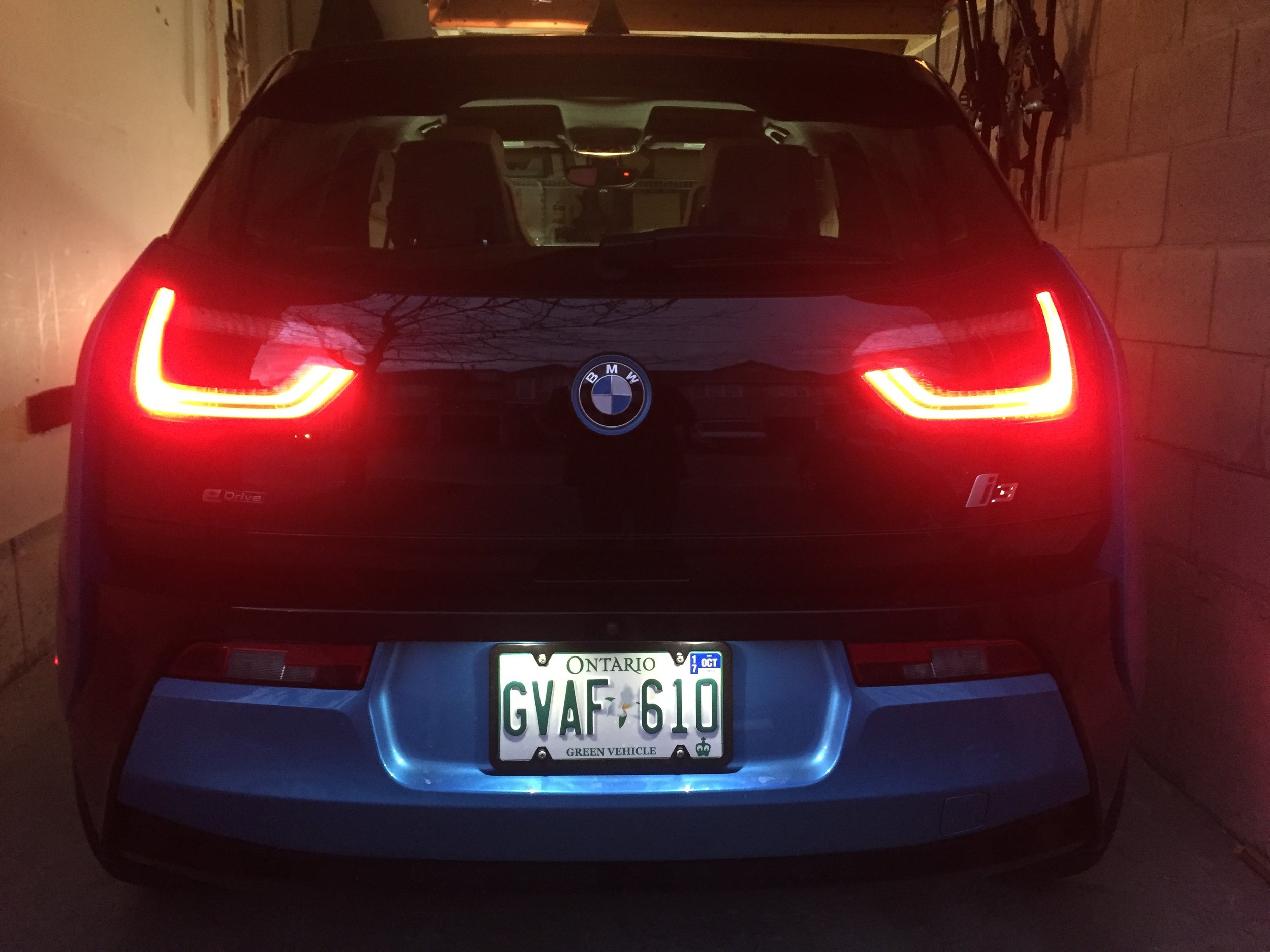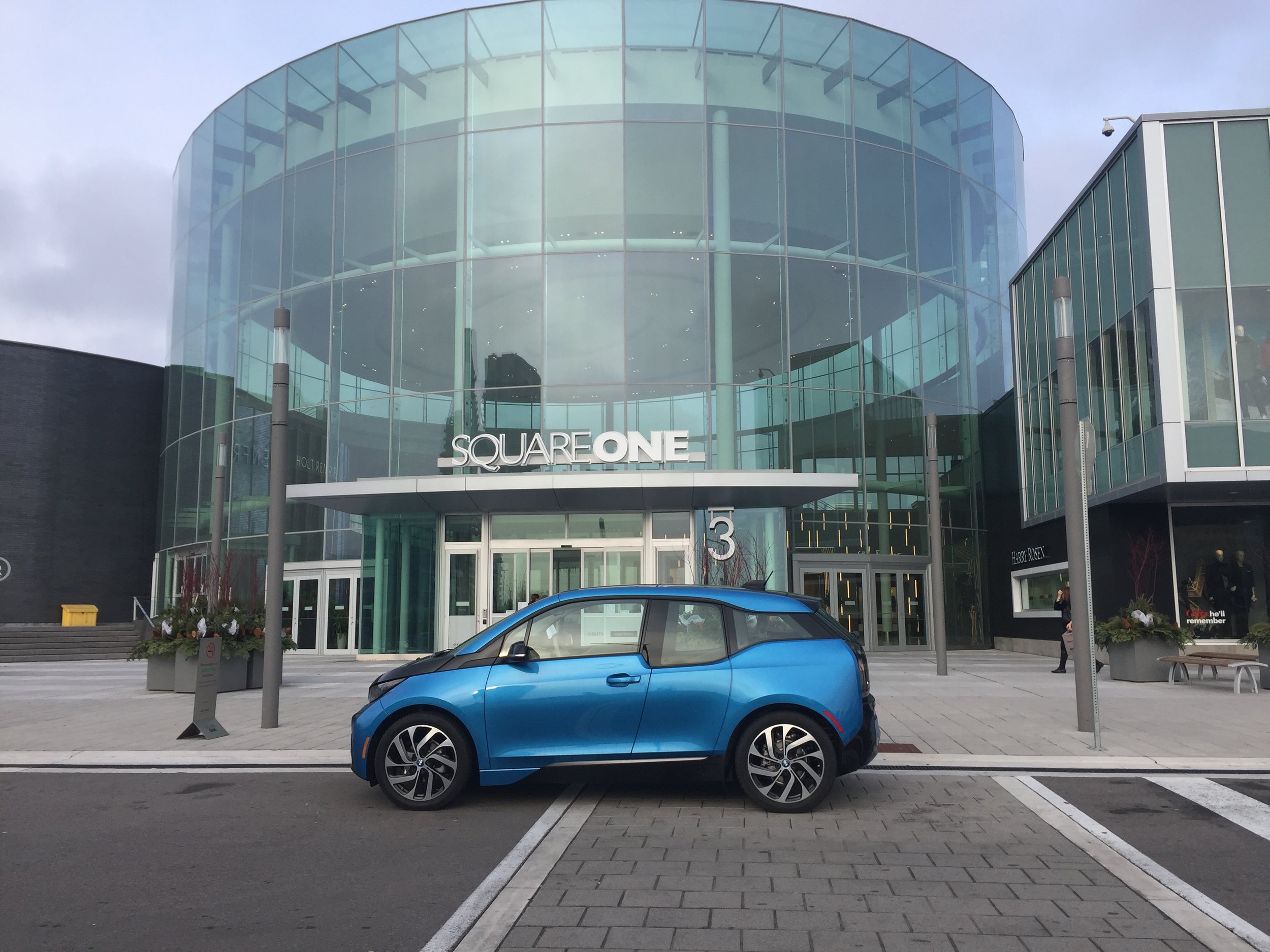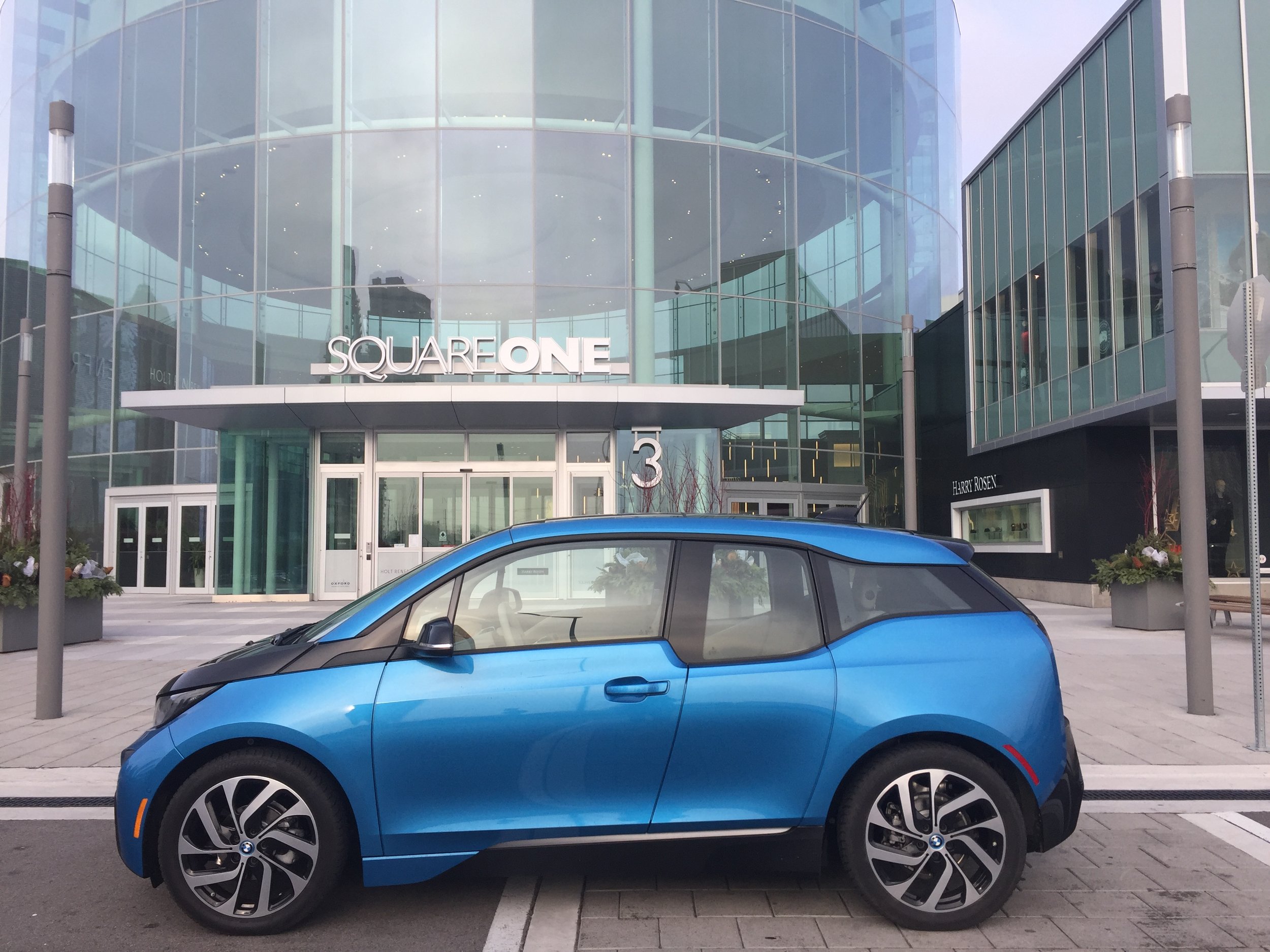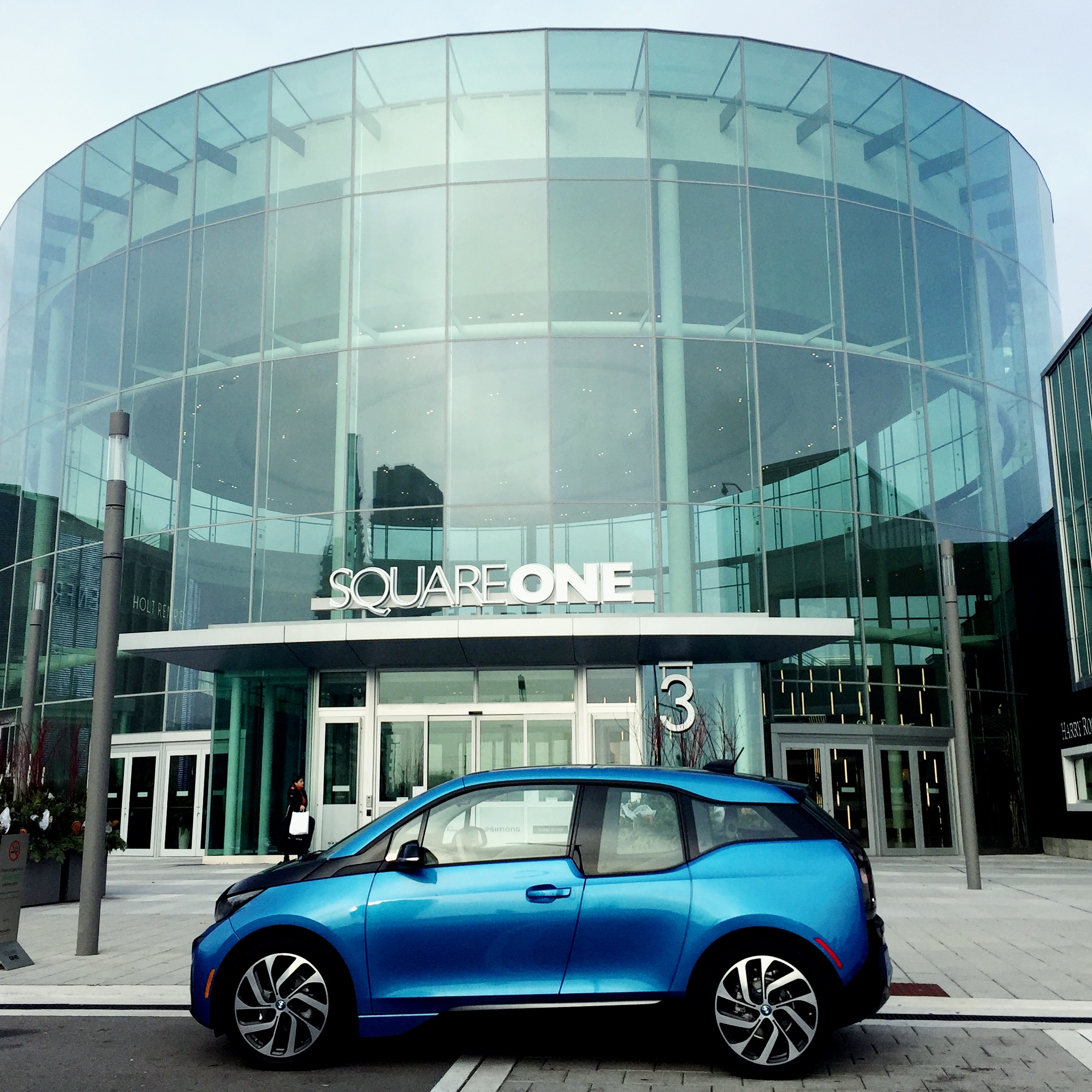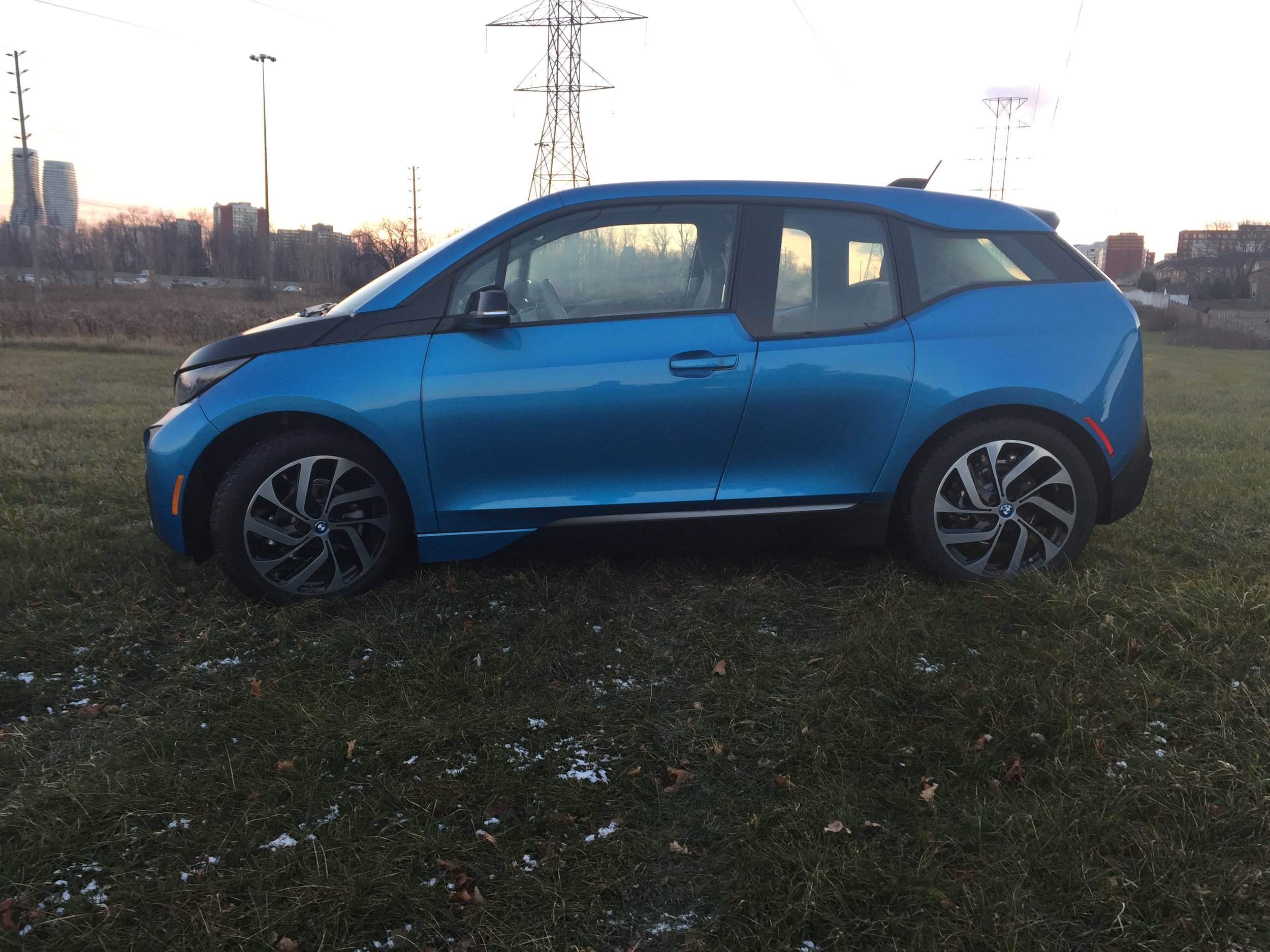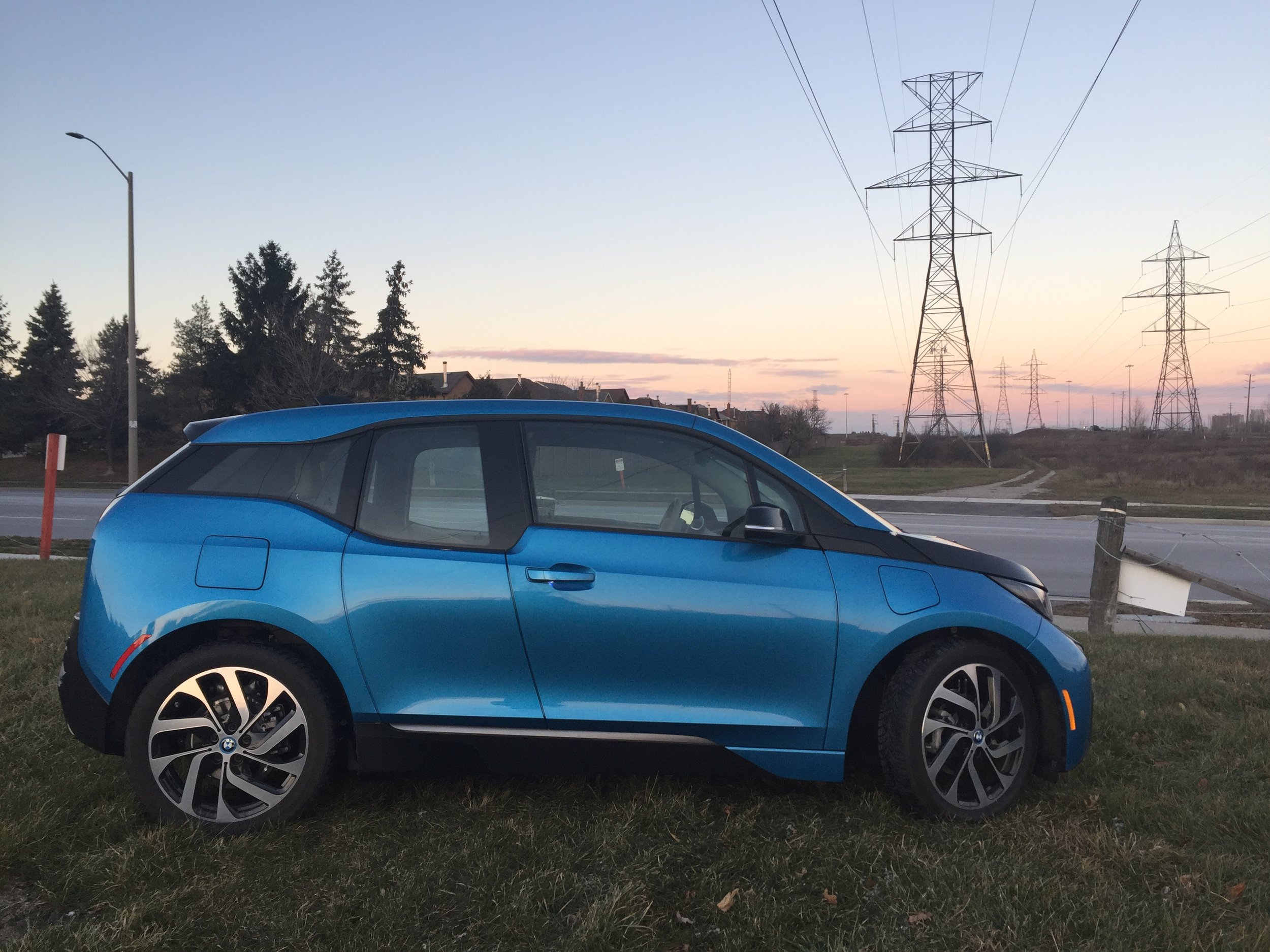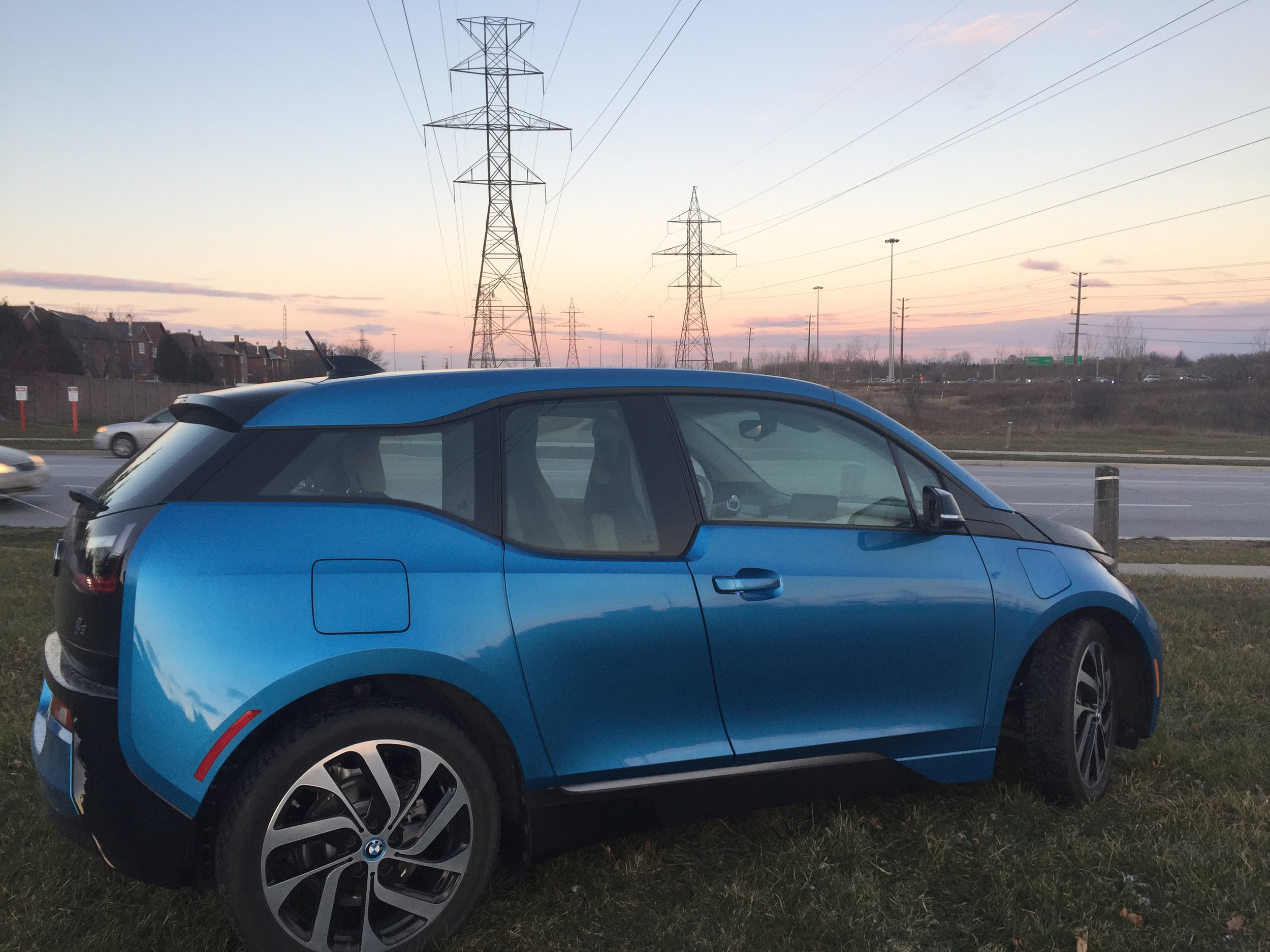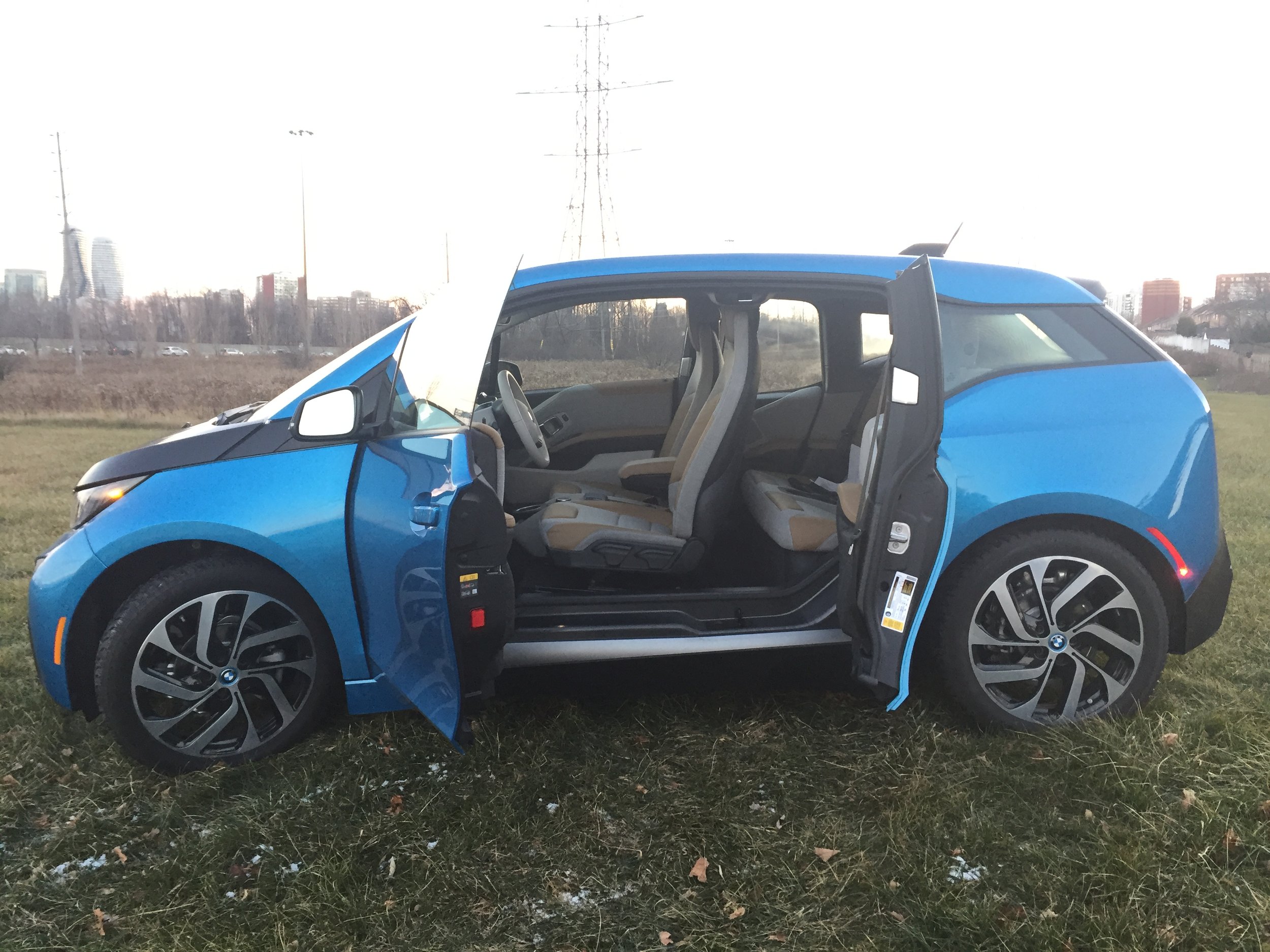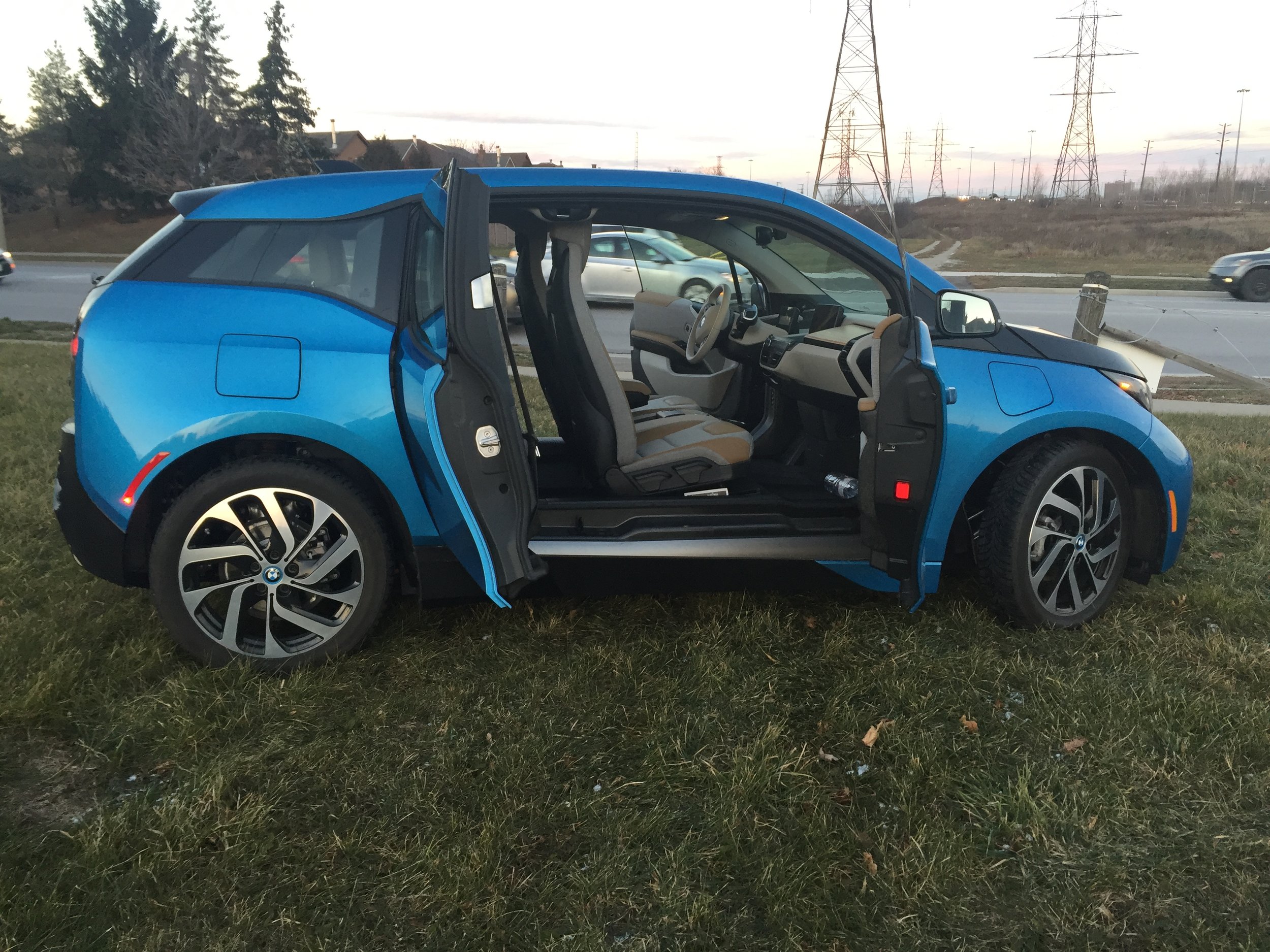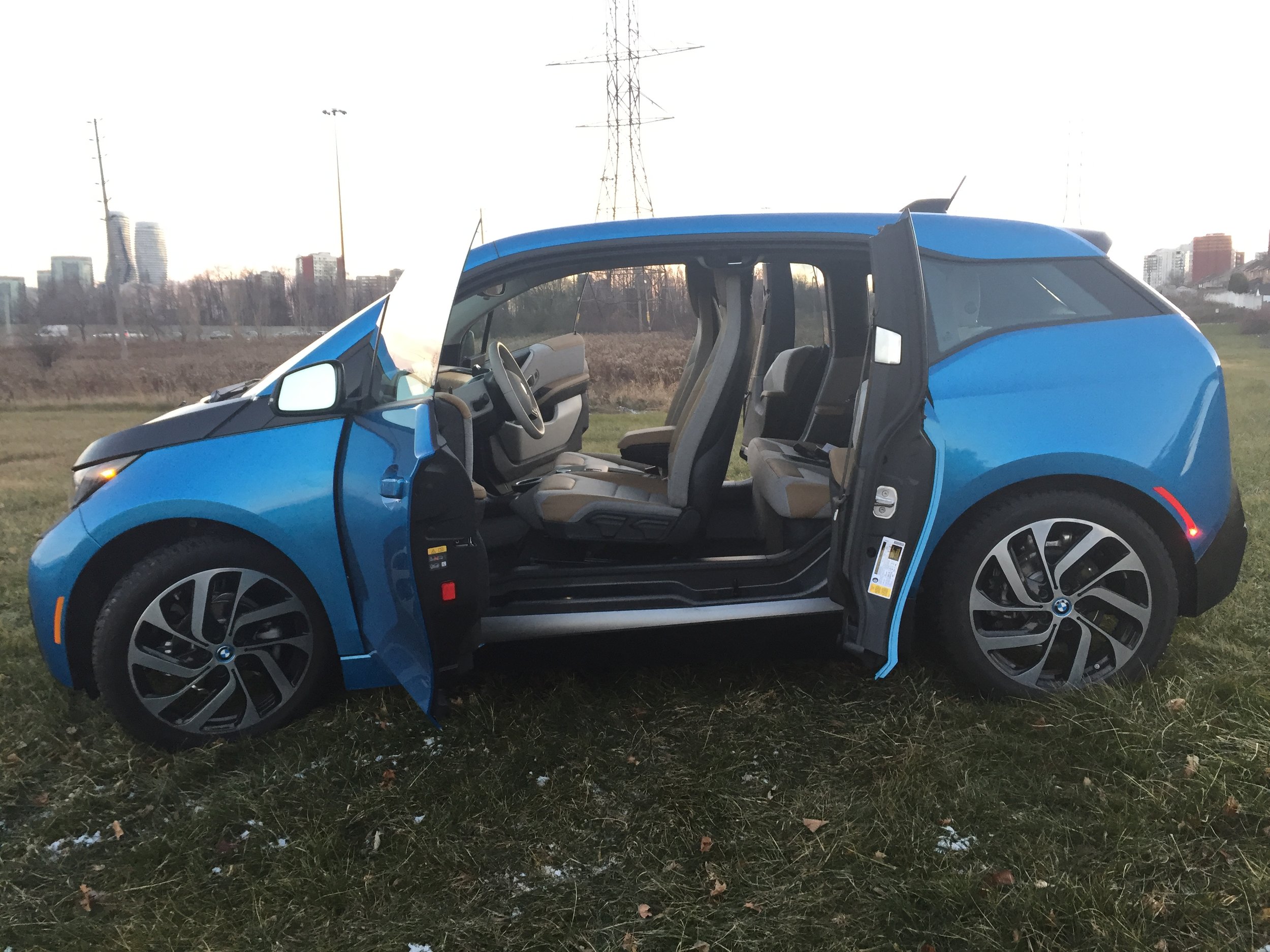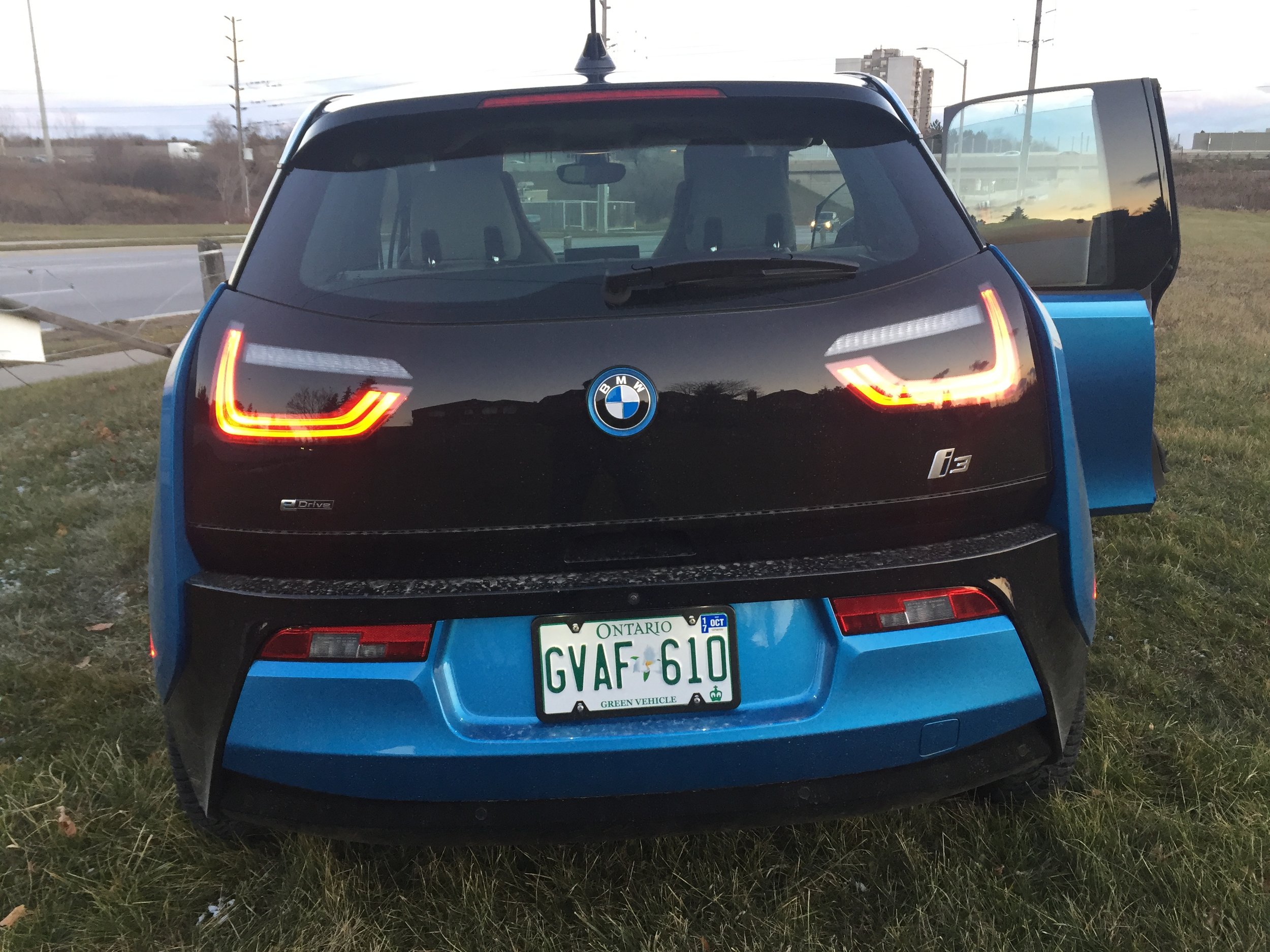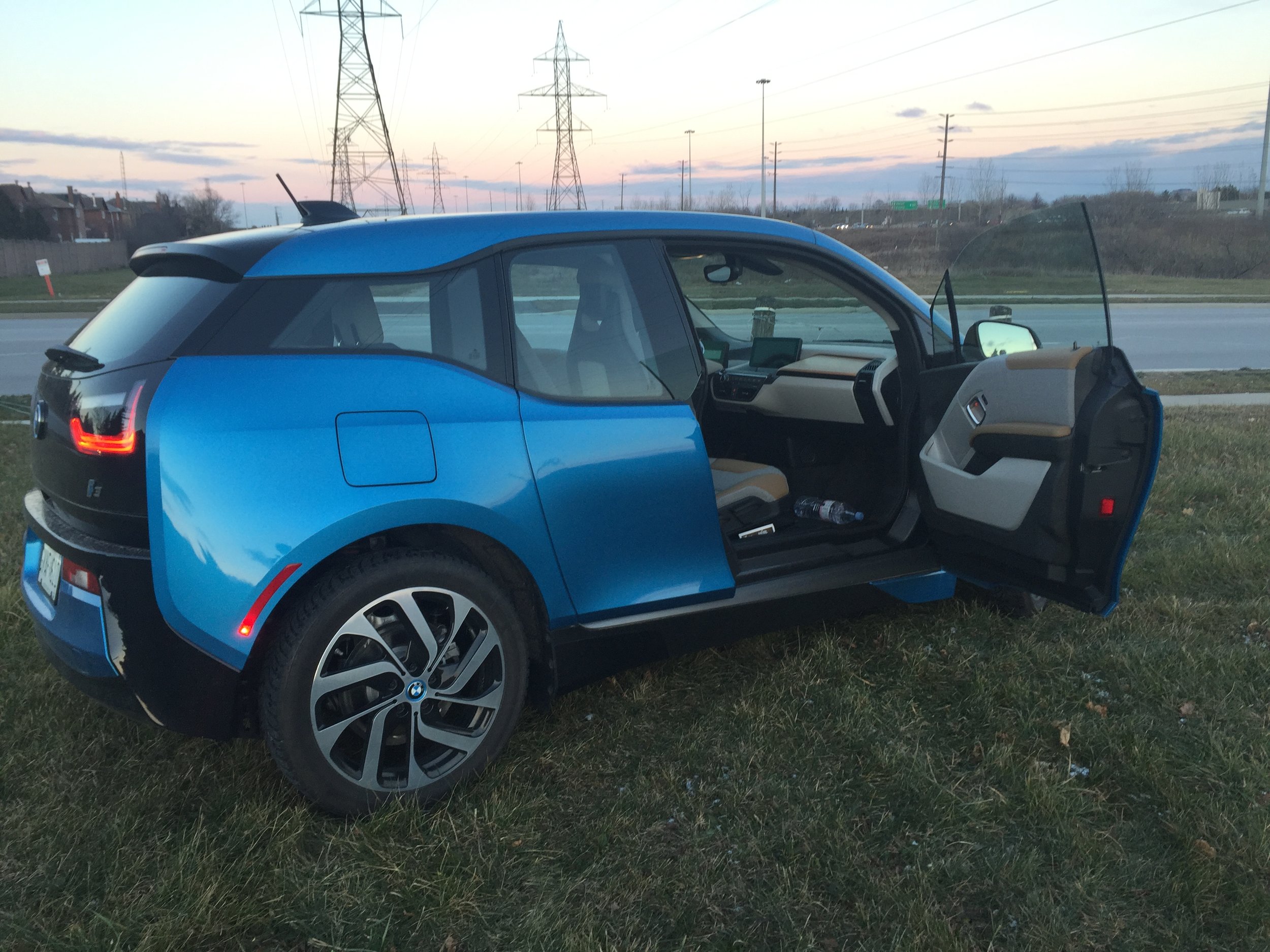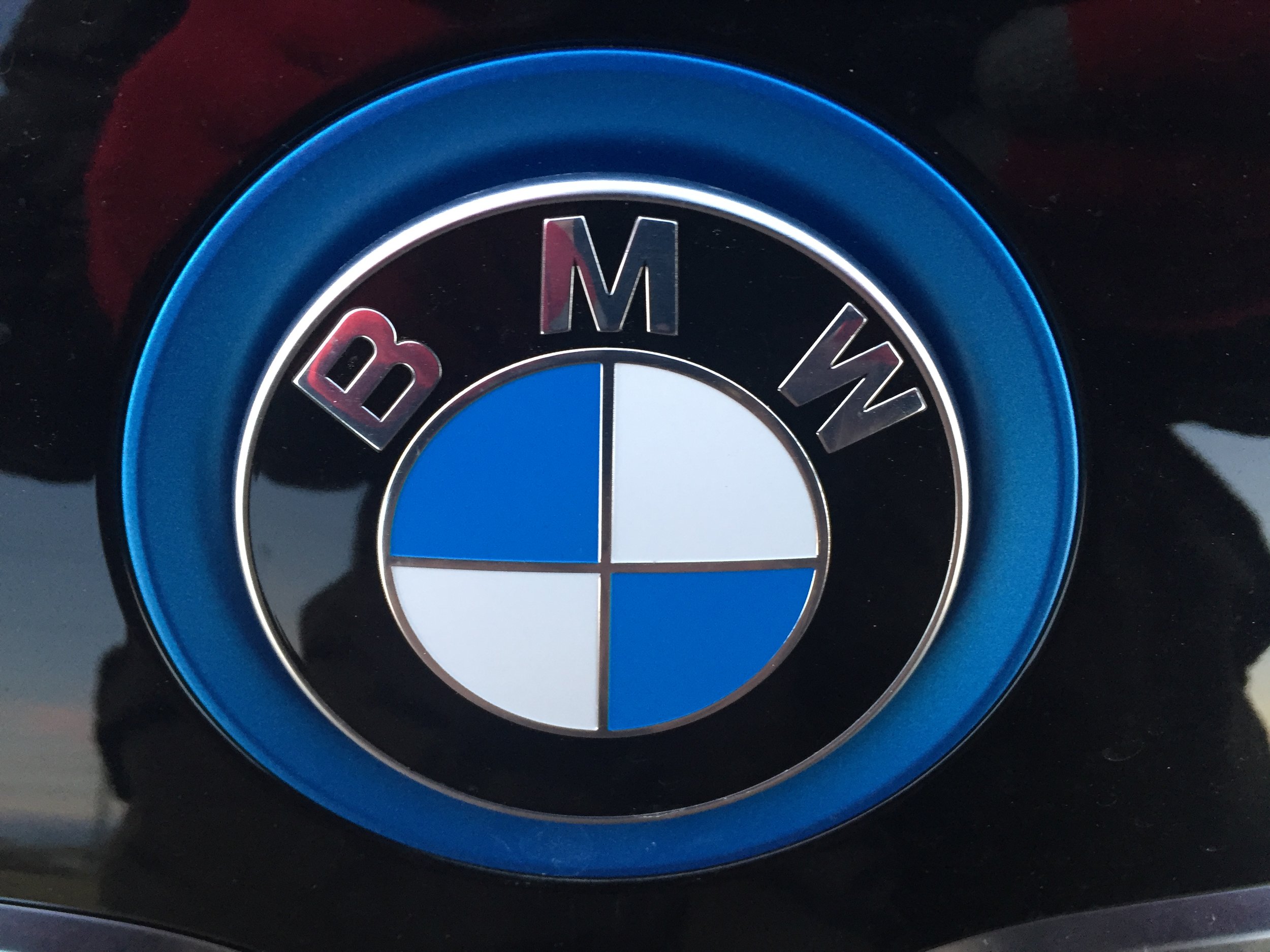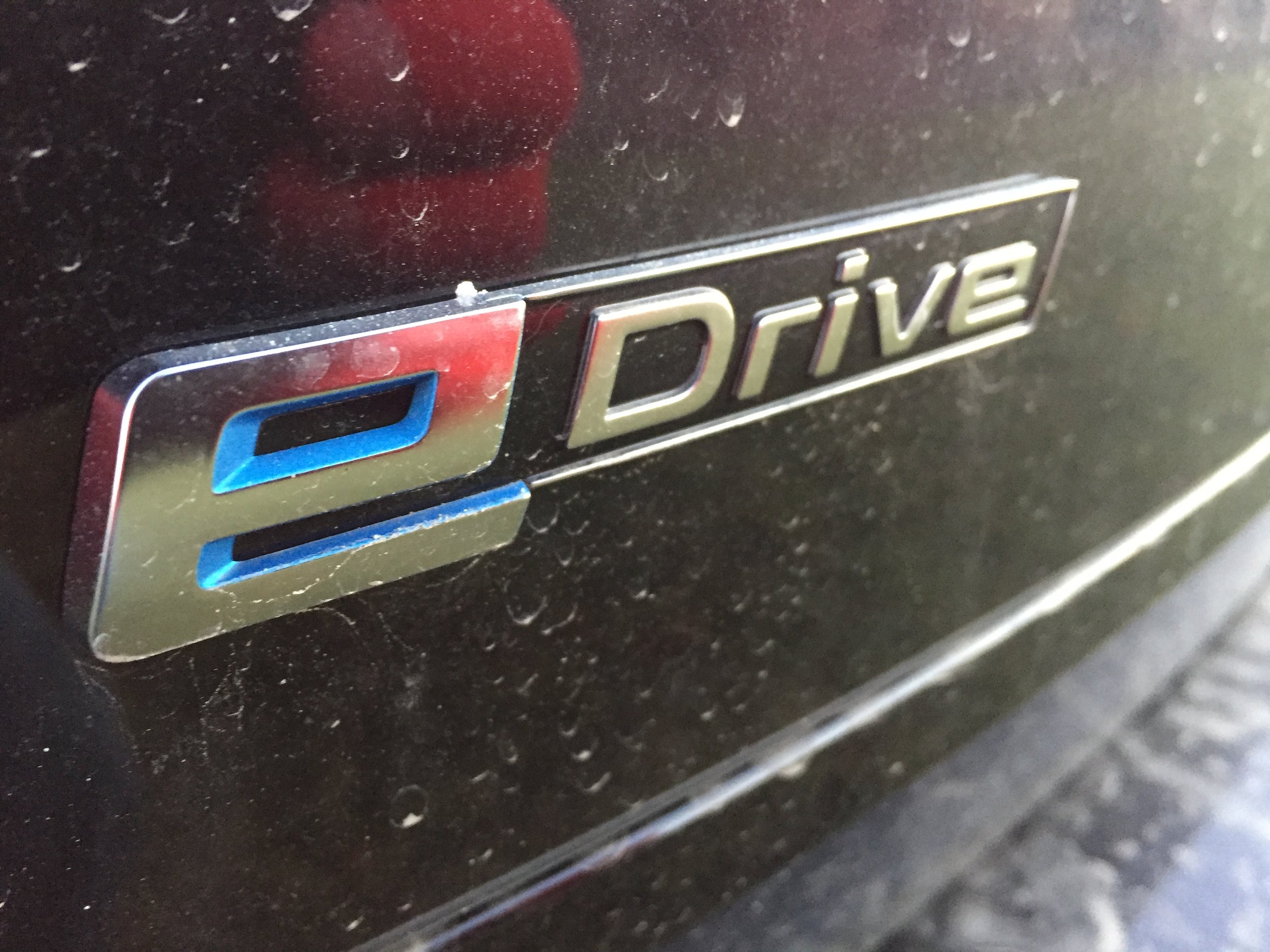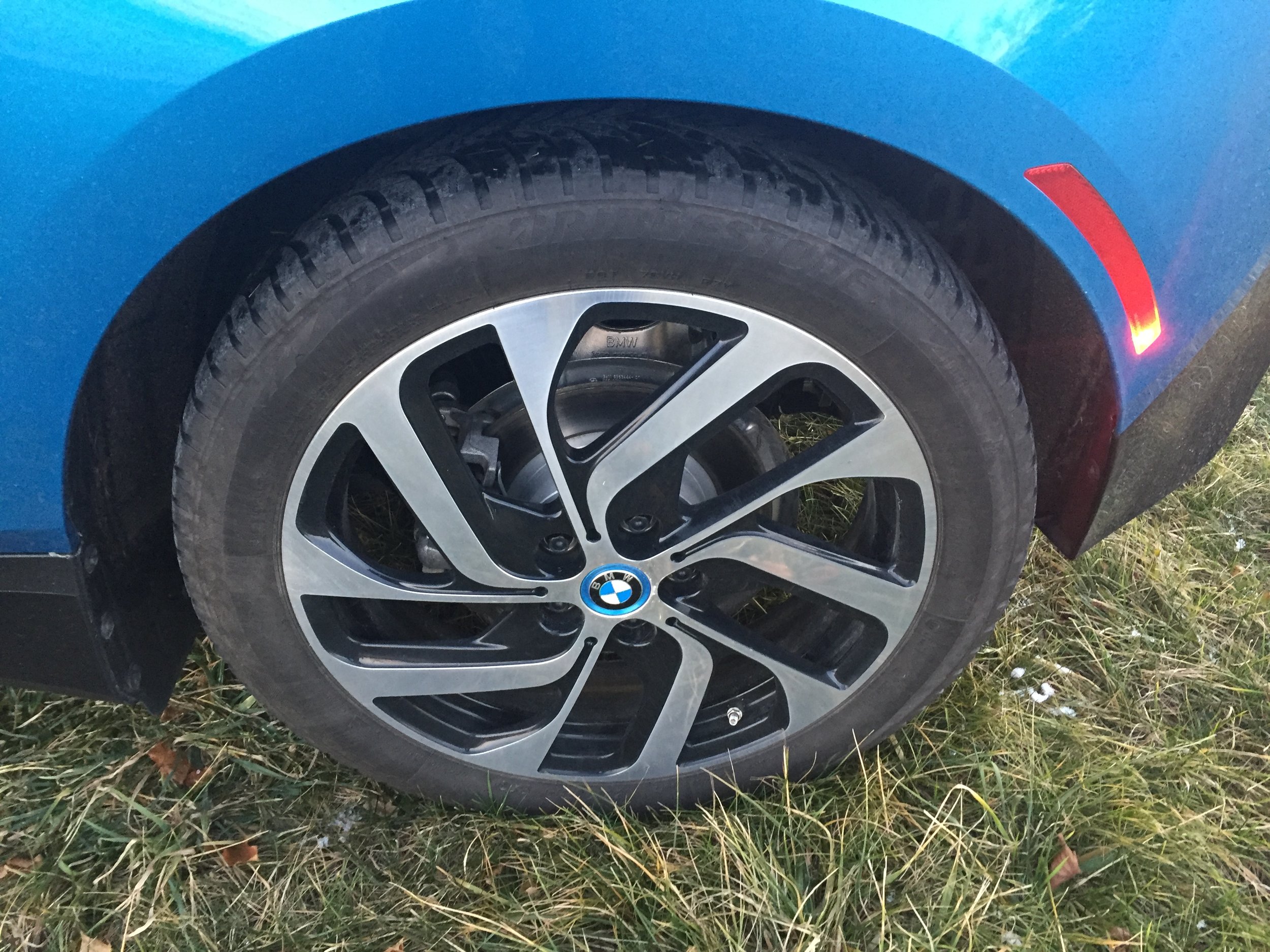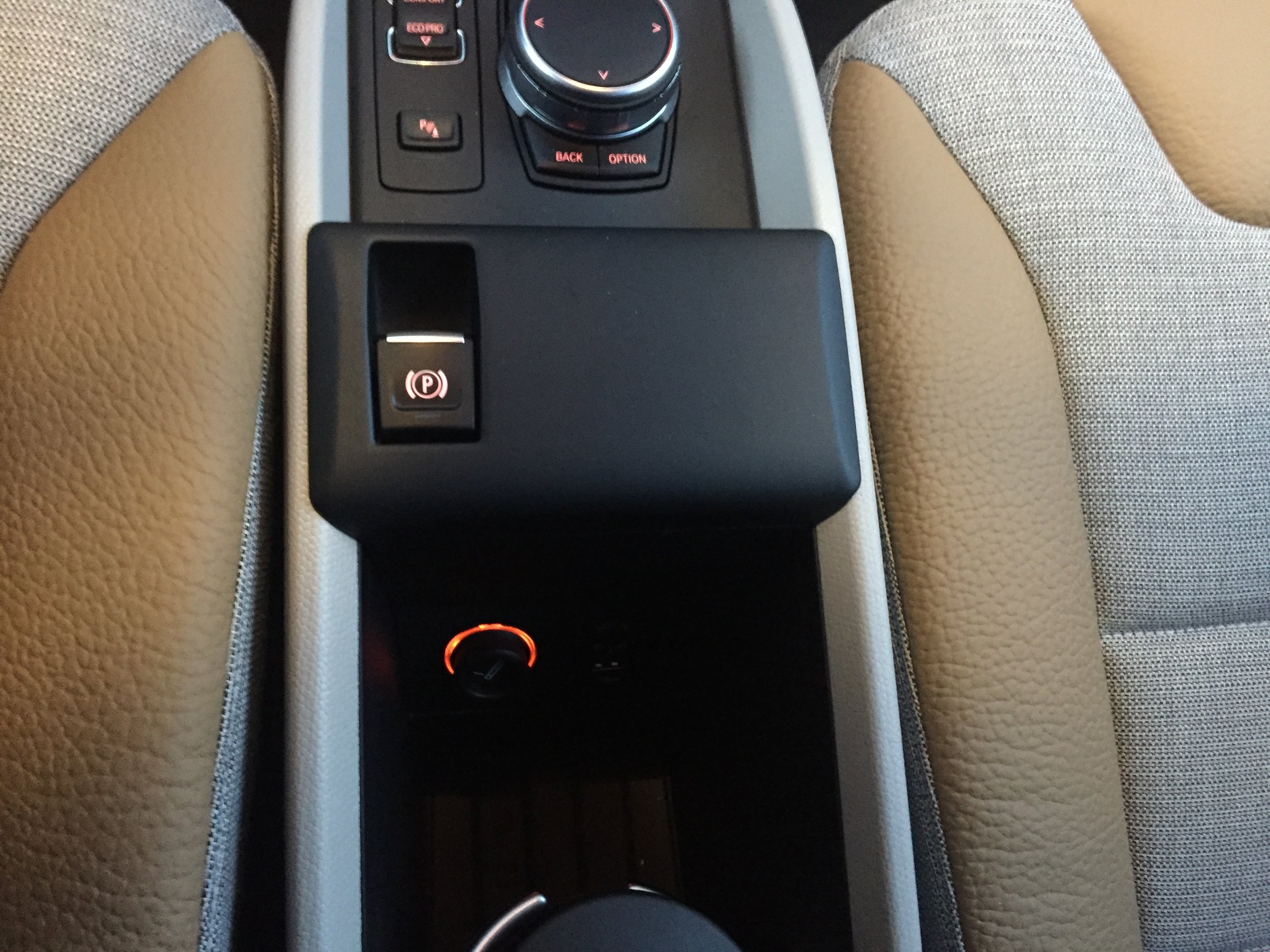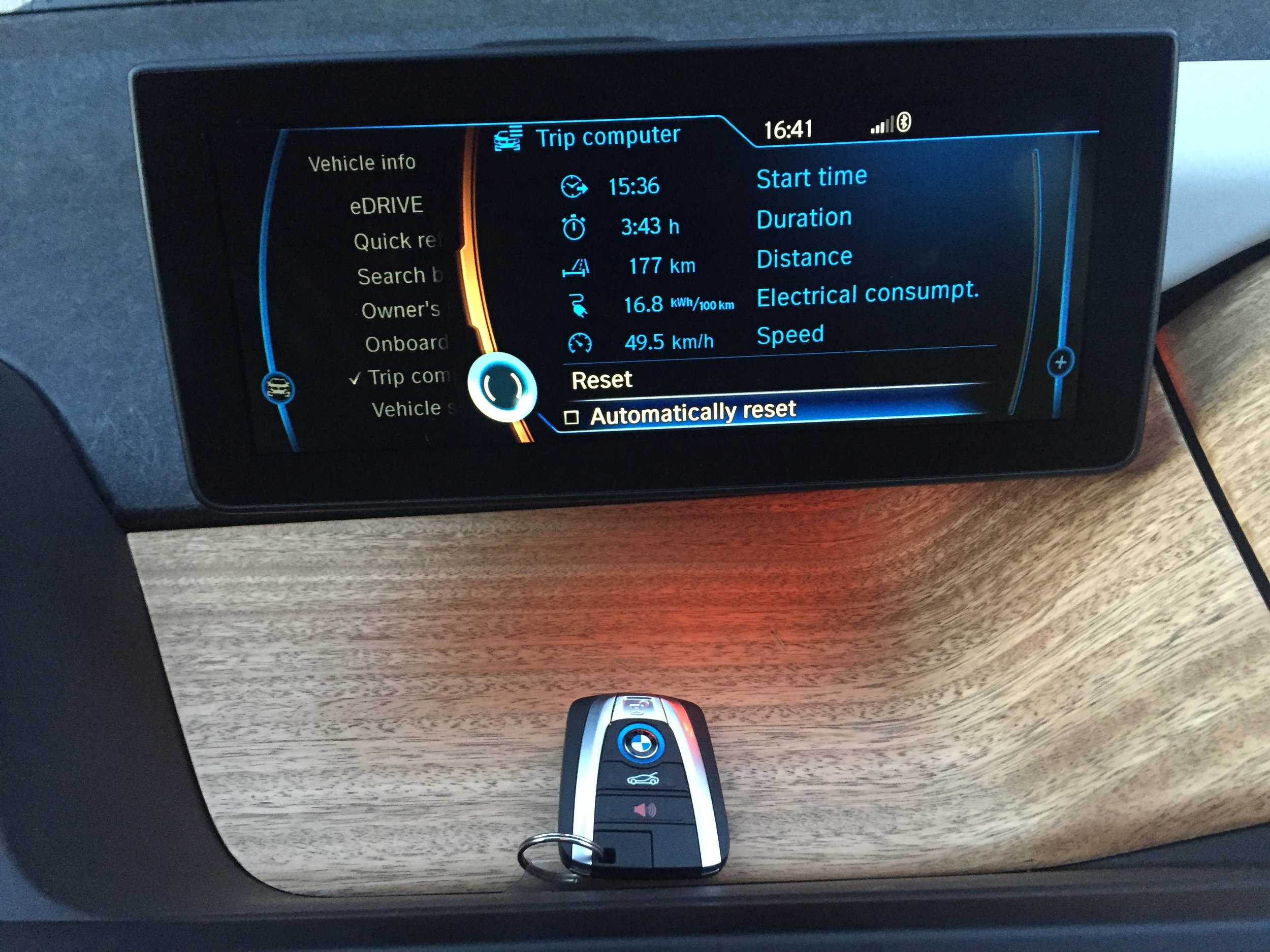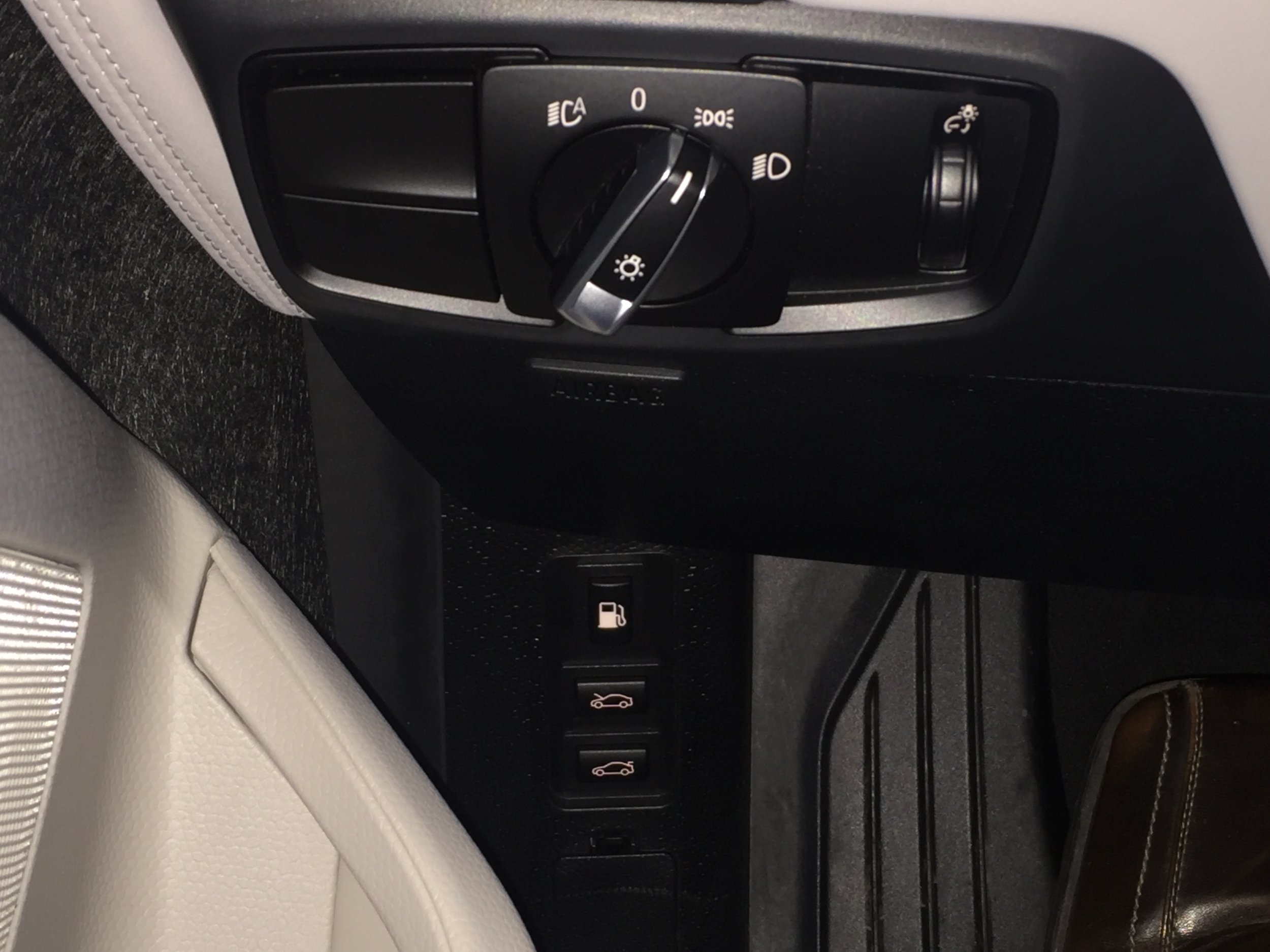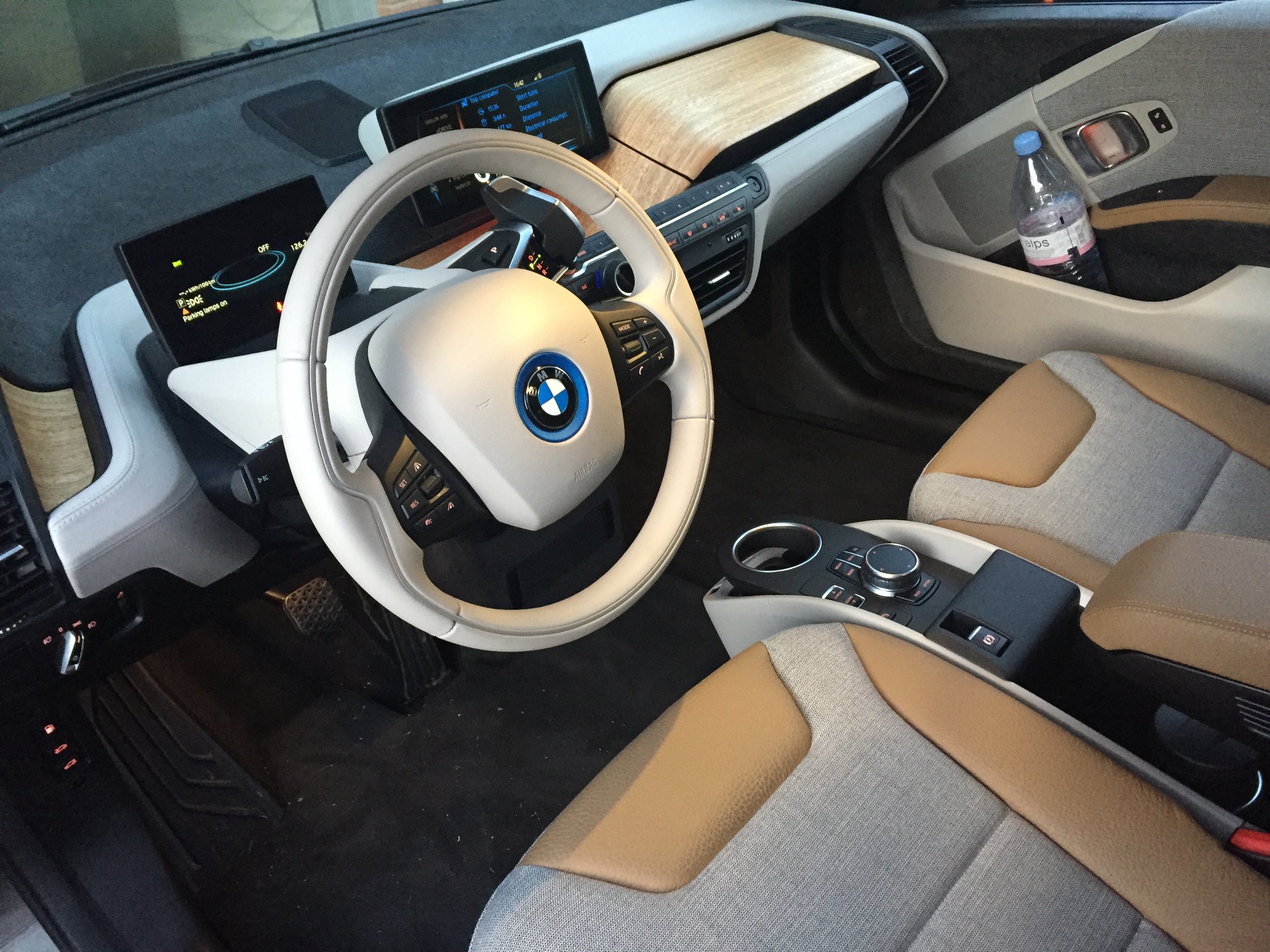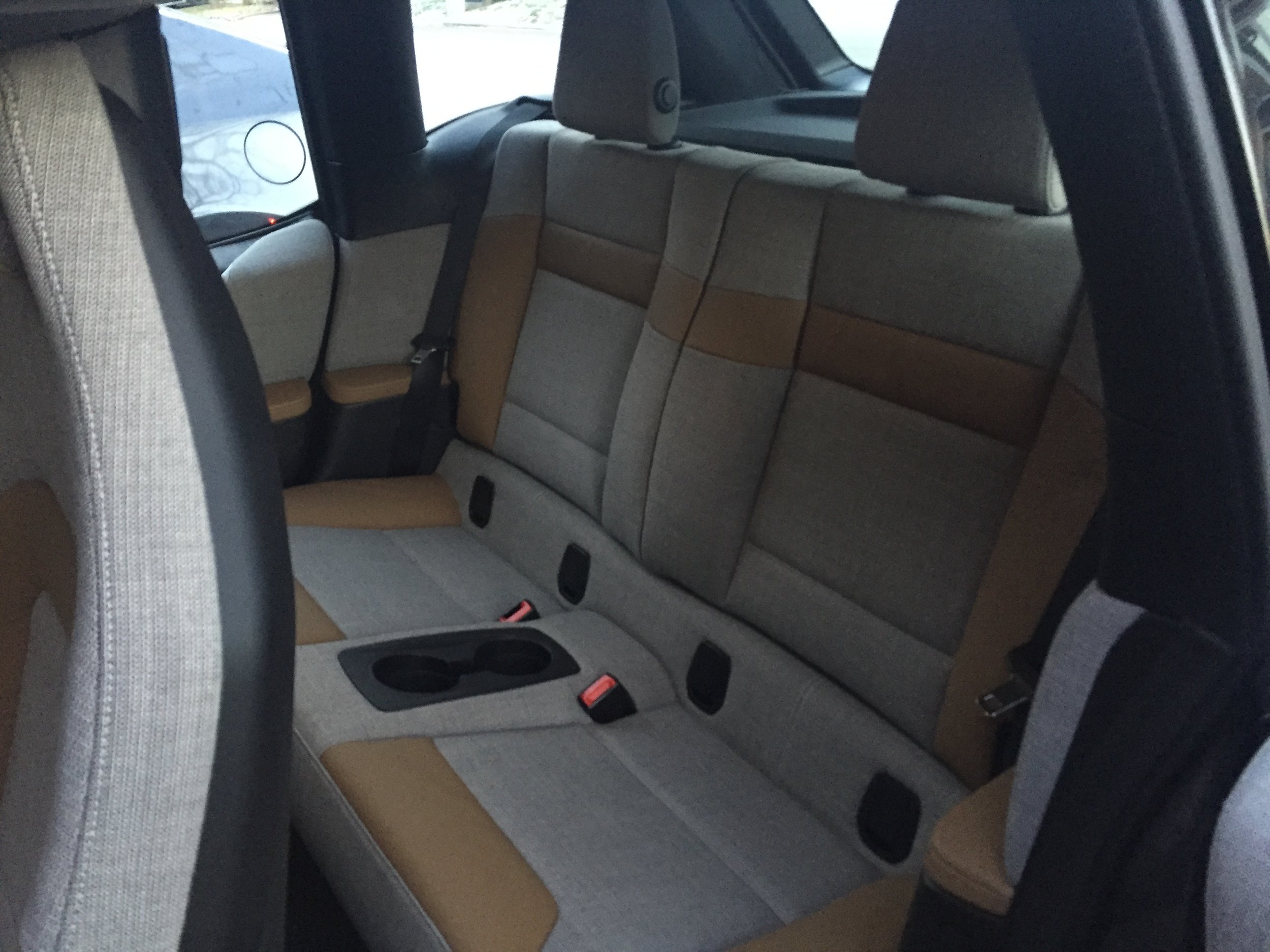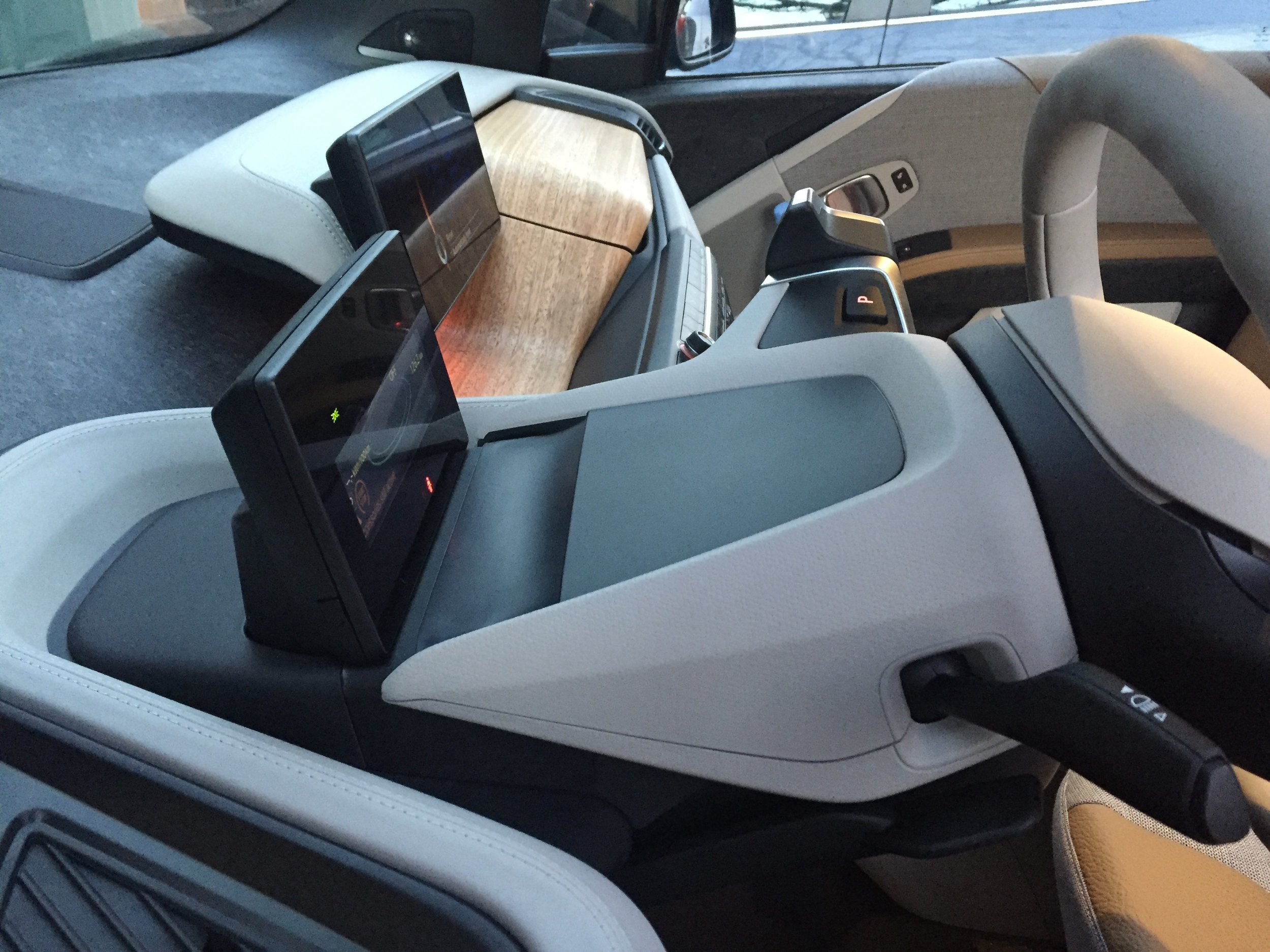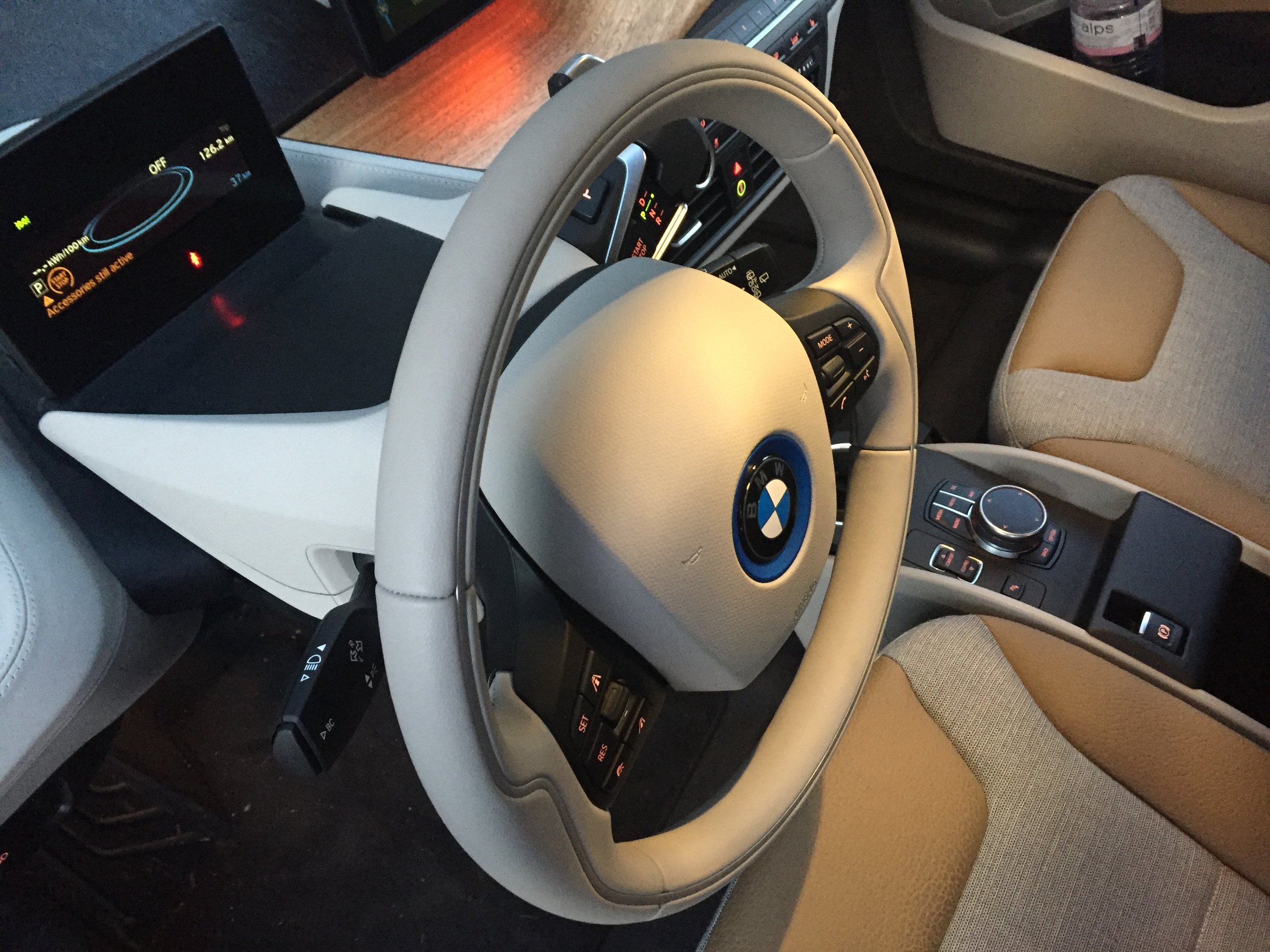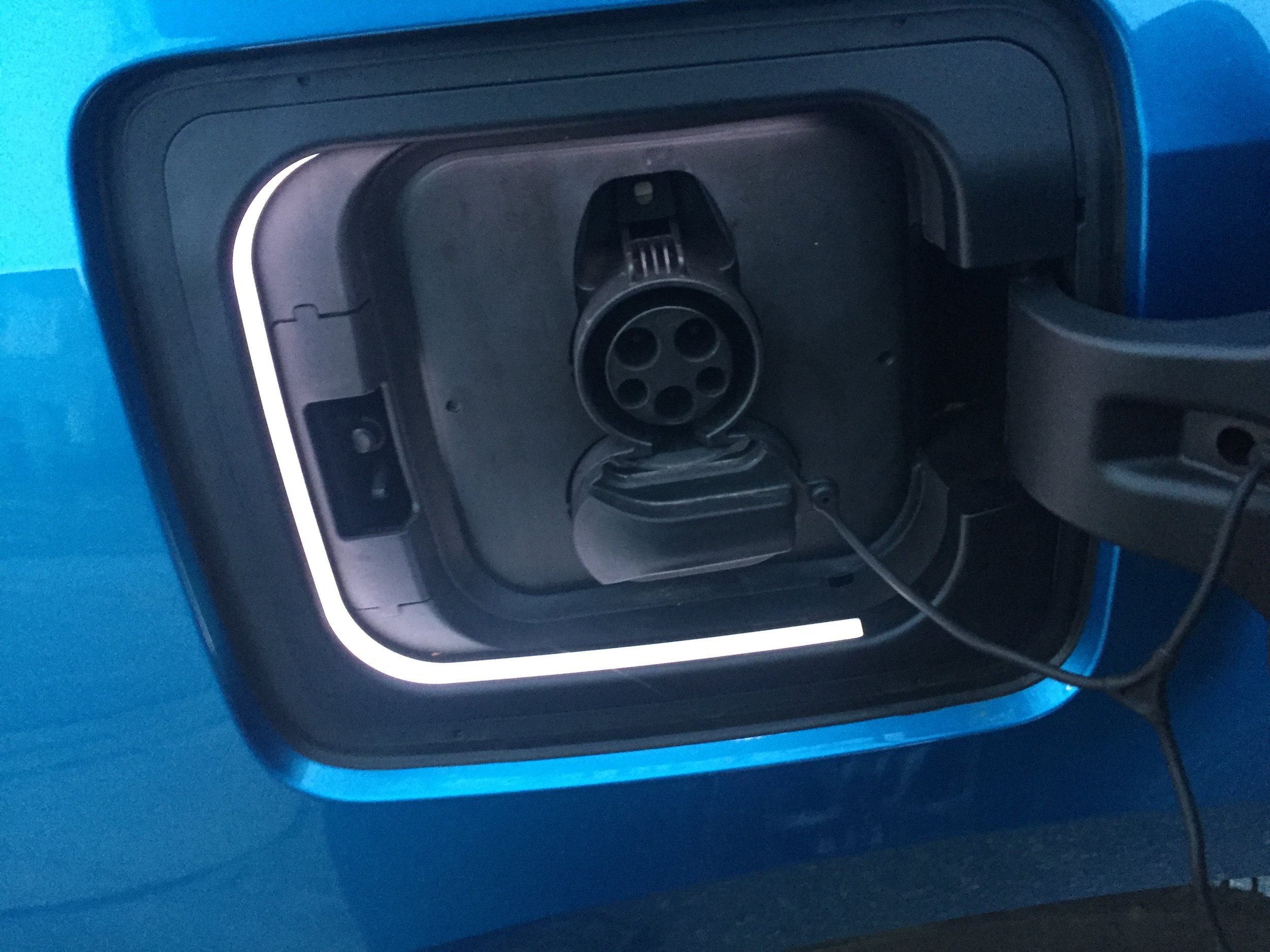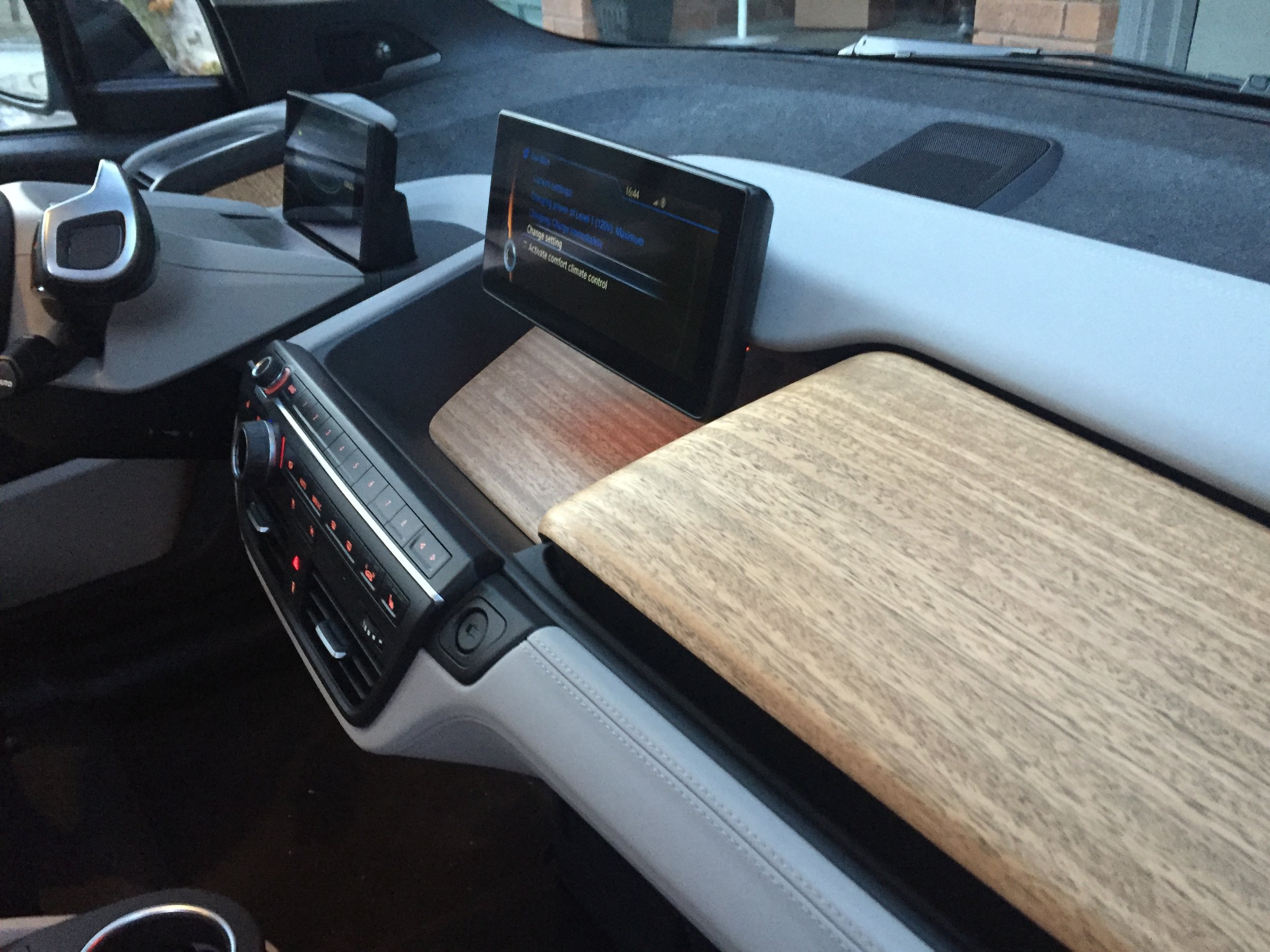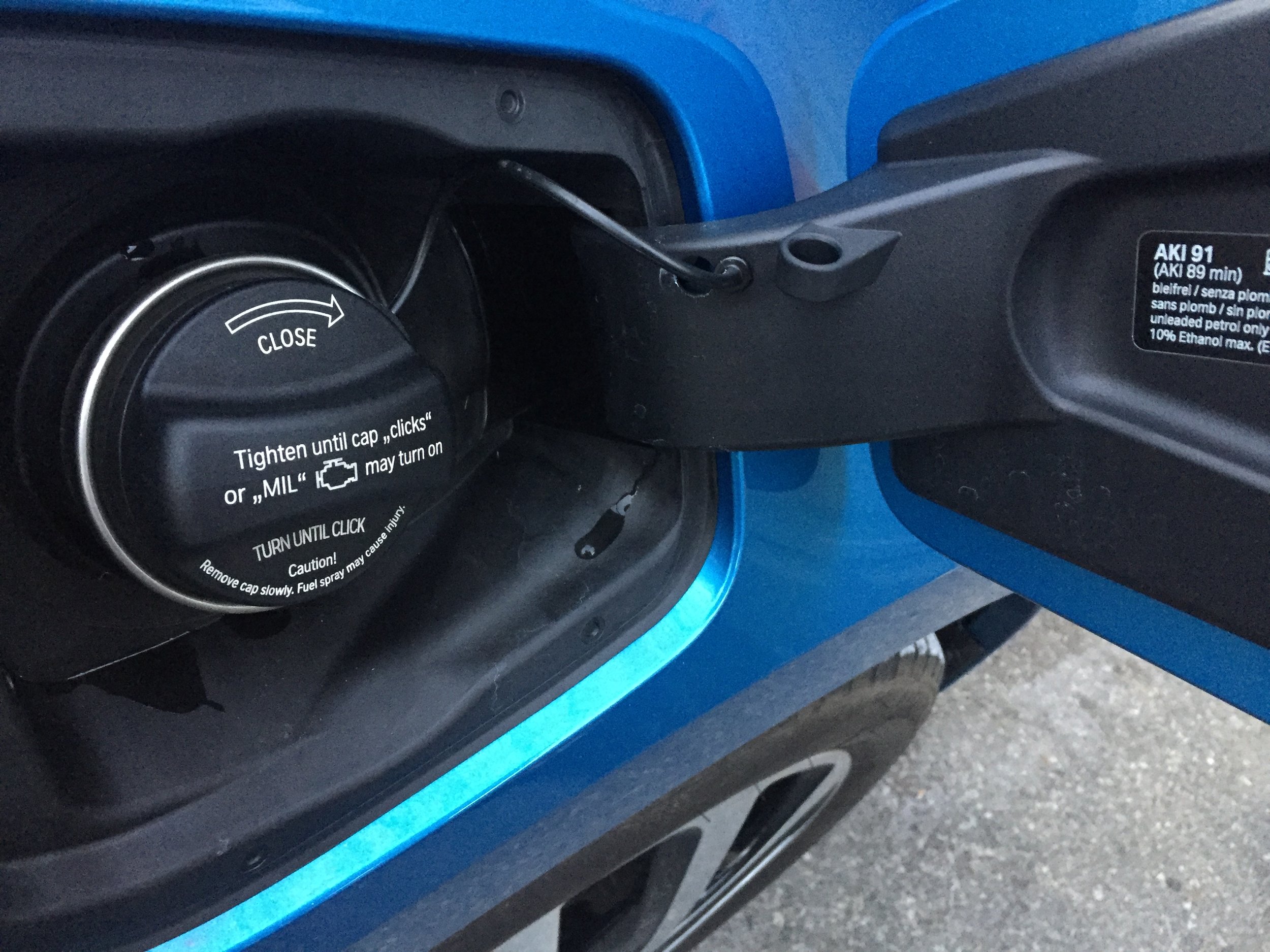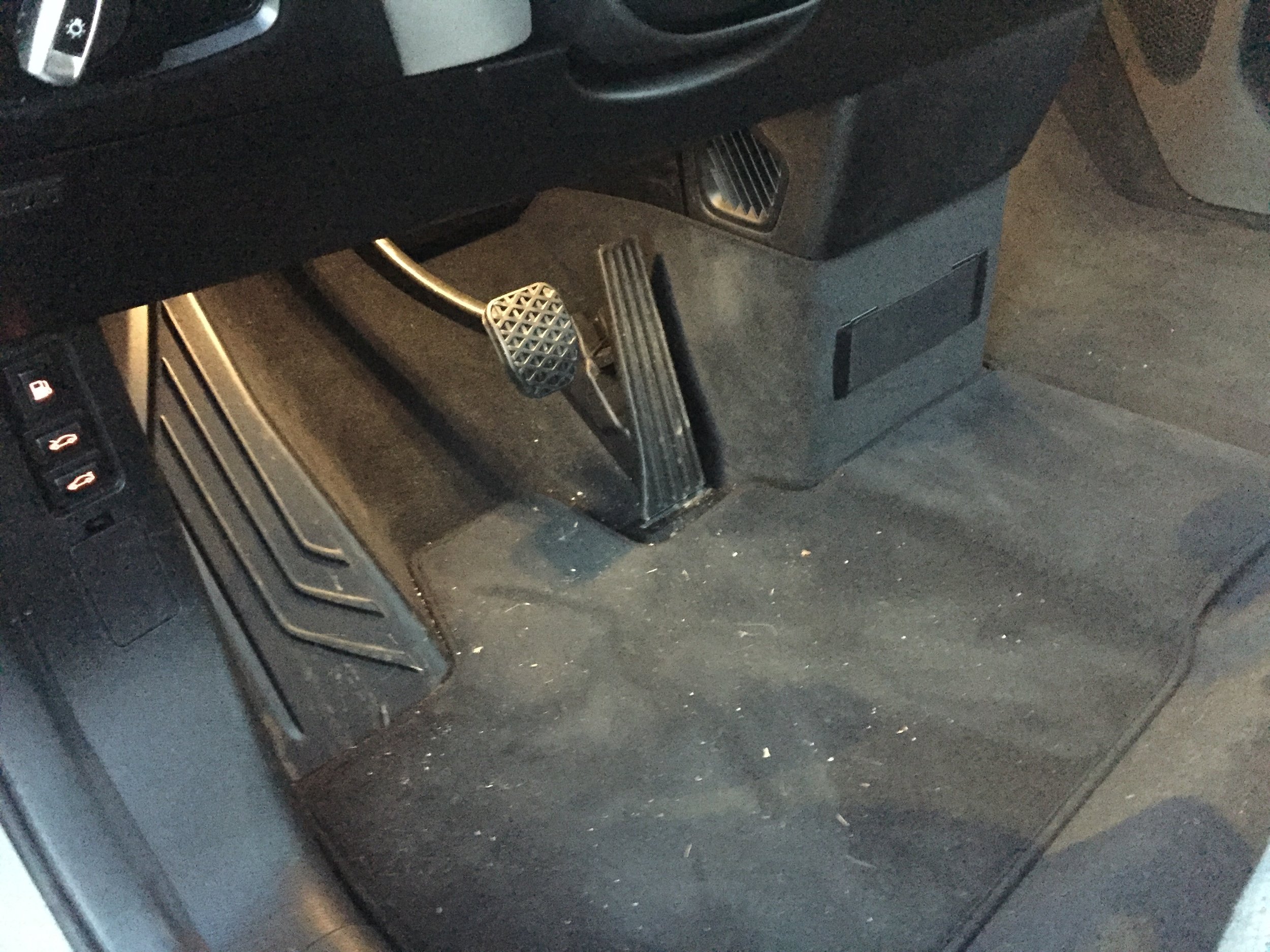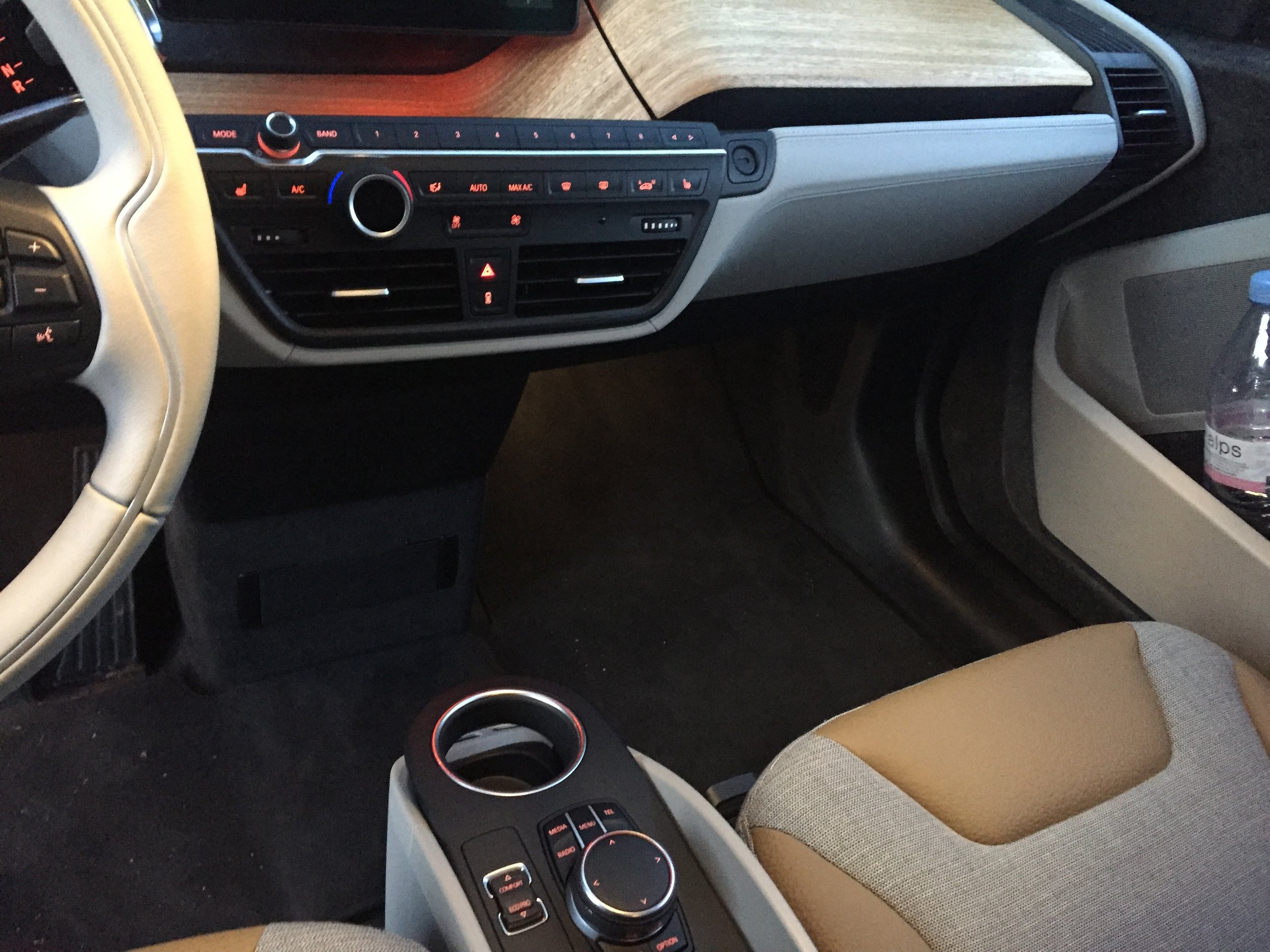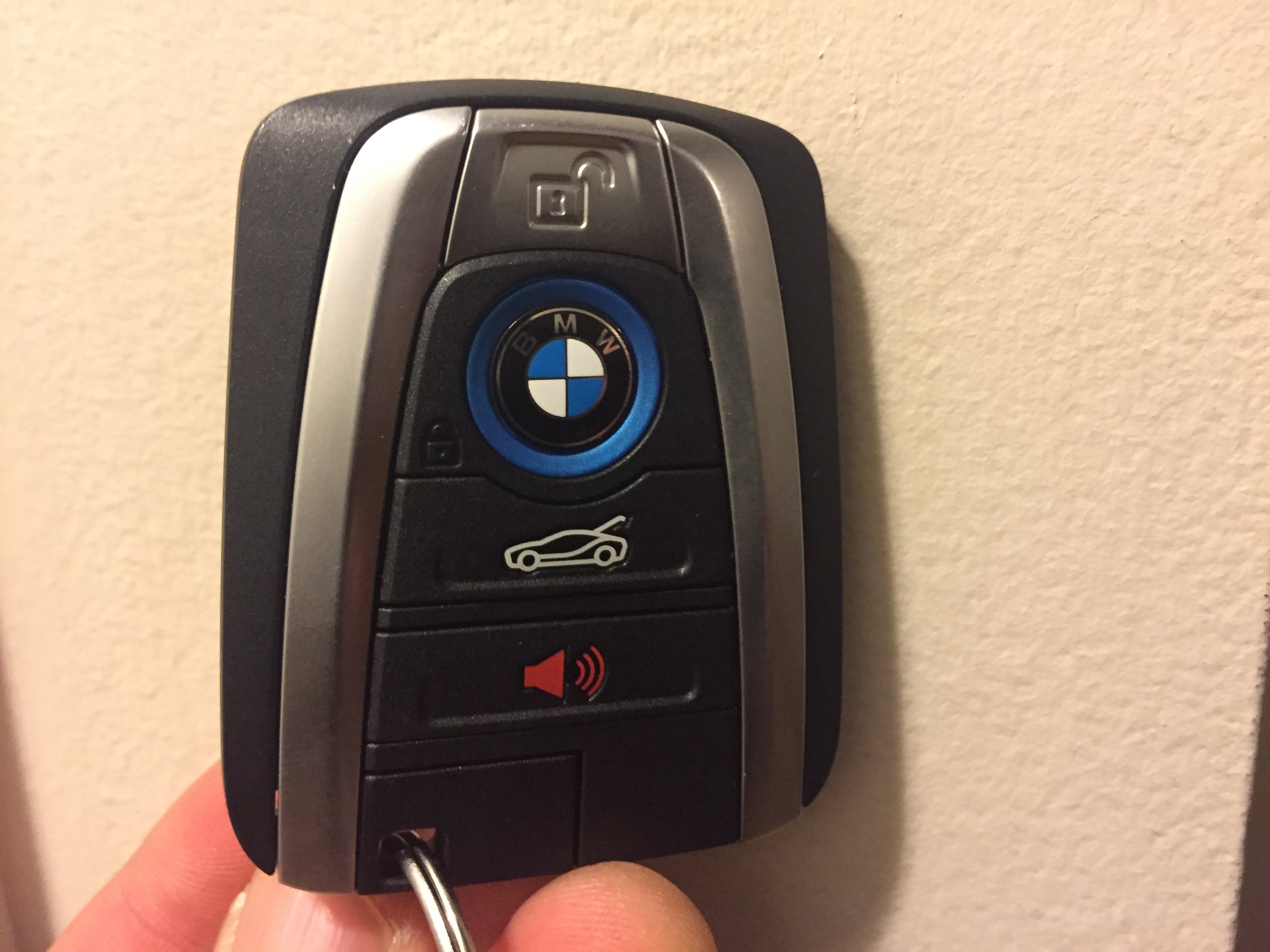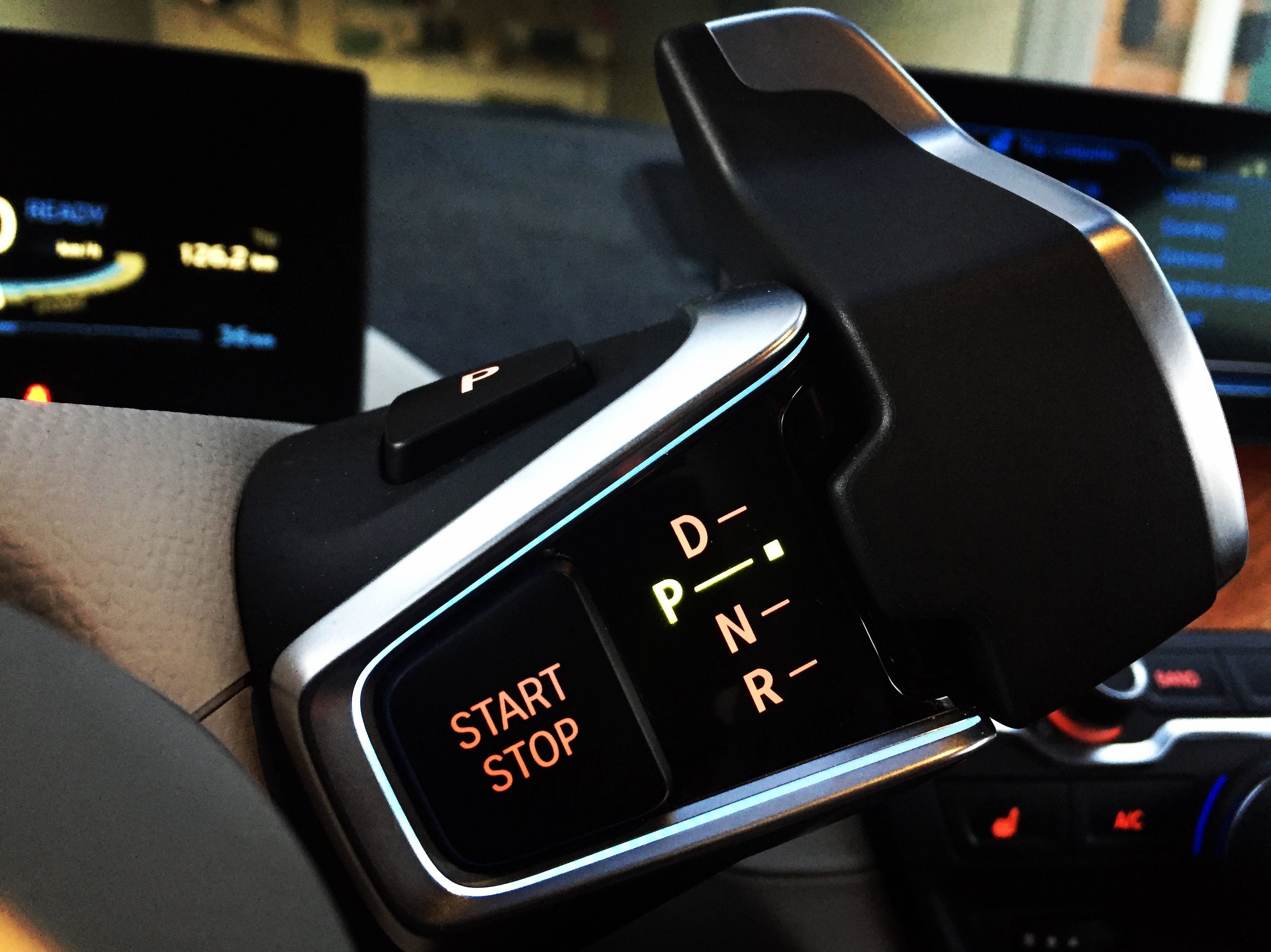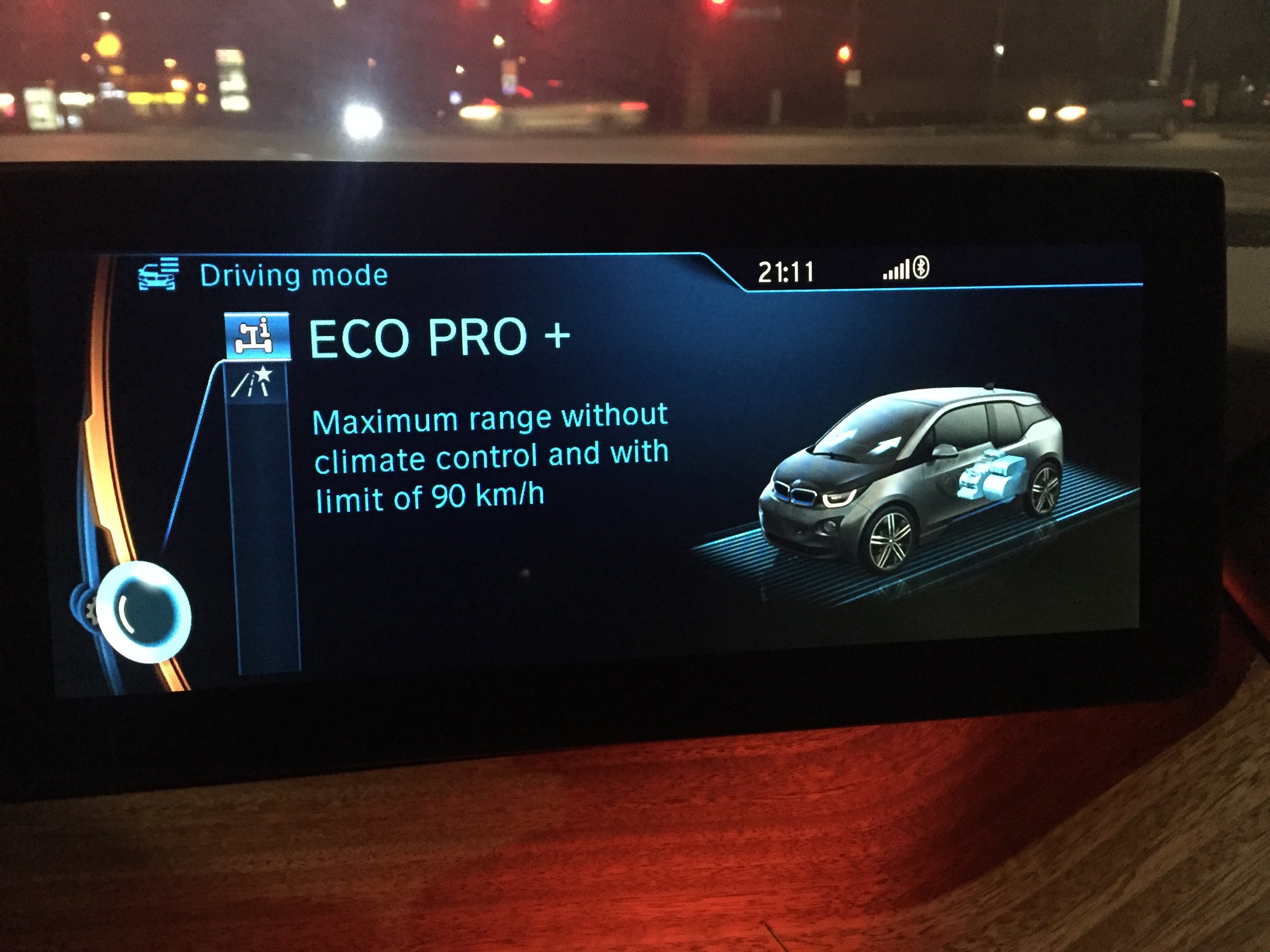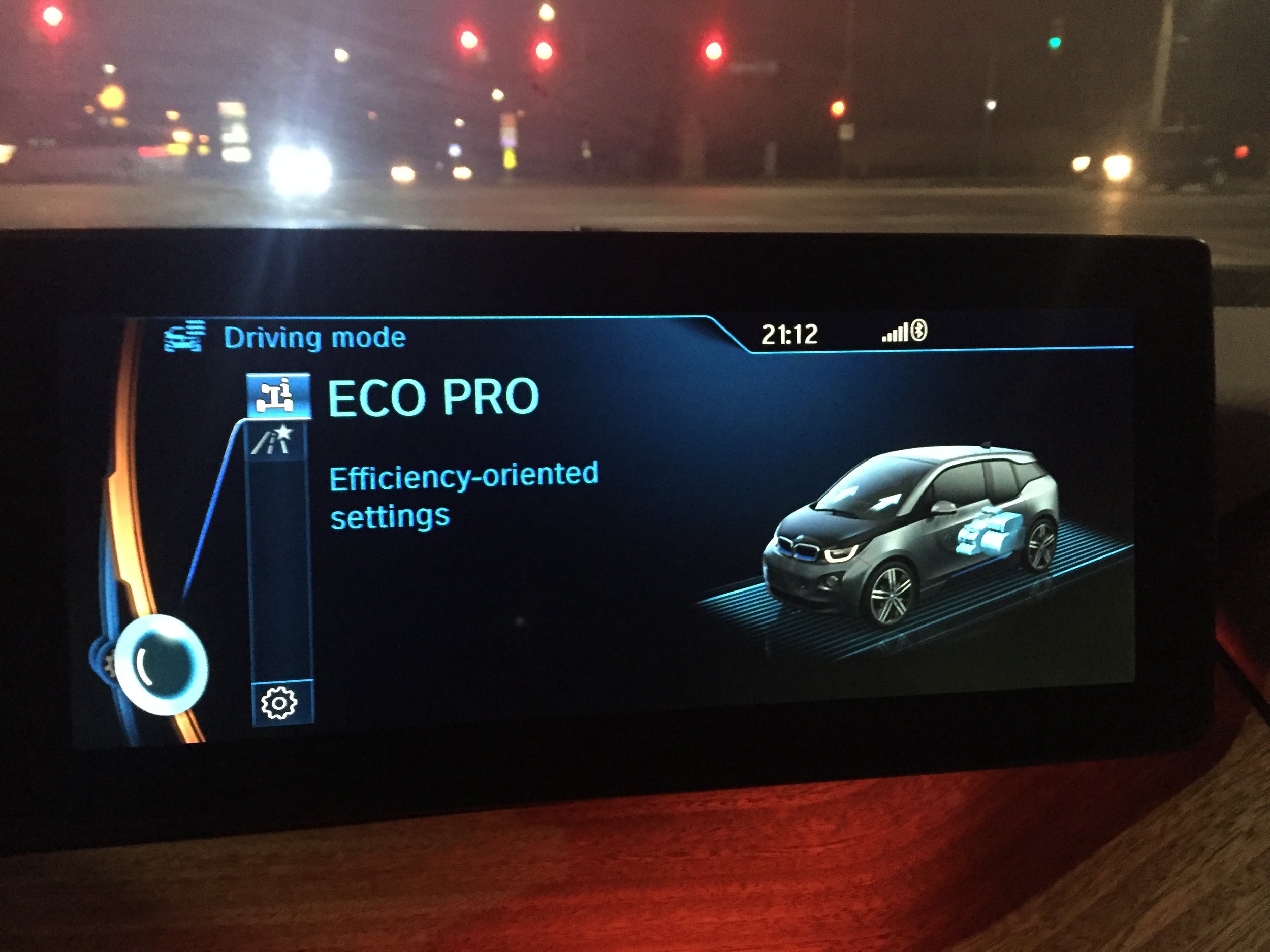Modern Motoring: 6 takeaways from the 2017 BMW i3
/Appearance
The 2017 i3 is what I aspire to be in my late 30s; tallish and thinnish. The exterior exudes a futuristic feel without a cheap looking vibe. Even though it’s short, the rear-seat-collapsed storage space hits 1,100 litres (260 litres with the rear seats up,) giving you plenty of space for groceries, guitars, amps, sports gear, etc.
The 20” wheels my tester came look good and the coach doors make rear seat access much easier (and they look really cool). LED headlights give a crisp look to the car and there were plenty of head turns from those who I drove by.
The interior is absolutely spectacular from an innovative standpoint. It felt like a living room opposed to a traditional automotive cabin.
The gearshift is a stalk off of the steering wheel, which is odd yet innovative. There were a few phantom grabs to the centre console for a non-existent gear shift but after day 1, I was easily adjusted.
Most of the materials used are sourced from renewable and recycled raw materials, which scores huge points from an environmental aspect.
The interior benefits from a massive open-concept approach, the quilted premium seats are quite comfortable and the large fiberglass panels are simply elegant.
On the road
There are three driving settings; Comfort, Eco Pro and Eco Pro+, with the last one capping the speed at 90 km/h and eliminating your HVAC and heated seat options. Most folks will live in the Eco Pro world to squeeze every last km out of the battery, at least during warmer months.
Braking kicks in the moment you release the accelerator as a way of recharging the battery. It’s an abrupt feeling of slowing down, so learning pressure points and feathering the gas pedal upon release will be key to not getting tapped from behind. This comes in handy in slower traffic situations as you can nearly eliminate using the brake pedal.
The instant torque that comes with all electric vehicles makes getting up highway speeds a breeze and even though it’s not as sleek as other electric options, there’s still a great driving feel to the car.
Thin stock tires lower resistance and improve efficiency but be careful on a windy day where the tires and lightweight vehicle can possibly sway you an inch or two if you don’t have two hands on the wheel.
I spoke with a colleague, Kathy Buckworth, who drives a 2015 i3, about how life has been for her with this innovative machine. In the winter months, she gets between 80 km and 85 km to a charge and warmer months see her hit between 120 km and 140 km on a charge.
The appeal to her was both environmental and financial as she could minimize her automotive footprint as well as bypass gas stations. She also strongly suggests to choose the Range Extender option because, like me, she easily sees the benefits of paying a bit more up front for a daily and weekly residual reward.
Her advice for others looking to jump into an i3? Know your driving patterns. For Kathy, who sometimes has a few hours at home during the day with a non-conventional work schedule, she can get a couple hours of charging time for her evening jaunts.
If your schedule has some regularity to it, it’s easier to plan your charging times around it.
For those who rely heavily on their car daily, find out where charging stations are in your daily/weekly travels and plan accordingly. Oh, and be extra diligent doing this as some charging stations are made only for Tesla offerings.
She also enjoys the time savings by being able to hop on the HOV lanes in traffic, which has saved her a ton of time over the past 2 years and will continue to.
Pricing
There are two primary options here.
A “regular” 2017 i3 will run you an MSRP of $46,900, which offers an up-to 200 km range.
The 2017 i3 with Range Extender comes in at $51,500. That extra $4,600 is absolutely worth it for the range increase of 120 km.
The Ontario government will cut you a nice sized cheque for $13,000 to ease the cost, which would bring the i3 Range Extender trim down to $38,500, which is a decent price for what you’re getting.
There are a few bells and whistles you can add on and my tester was jammed full of them.
The $3,000 premium package gets you 19” wheels, a rear view camera, park assist, navigation and park distance control.
I also had the $2,750 Technology package, which includes real time traffic info, internet, a Harman Kardon audio system, pedestrian approach control with city braking, cruise control and a few other goodies.
On the inside, for $850 you’ll enjoy eucalyptus wood trim and velour floor mats.
Want a t-top-esque sunroof? Only $1,200 and metallic paint (my colour was Protonic Blue Metallic) is another $895.
BMW even bumped up my wheels to 20” at a cost of $1,300.
All in all, my as-tested price chimed in at $61,845 before the $13K rebate and Destination fee of $2,145, giving you an approximate price of $50,990.
Propulsion
The 2017 i3 comes with a 94 Ah battery (previous models have a 60 Ah battery) that has a capacity of 33 kWh, all thanks to the higher energy density of the lithium ion cells. With the Range Extender comes a two-cylinder gasoline engine that kicks in once the batter hits 6.5% of remaining charge. For 2017, the fuel tank holds 9 litres, a 25% increase over previous models.
The i3 generates 167 horsepower and 184 lb-ft. of torque from its rear mounted engine and does the 0 to 100 km/h sprint in just over 7 seconds.
BMW offers an 8-year/100,000 mile warranty on the battery as well, for those who are skeptical of overall battery life.
Without changing the exterior dimensions of the battery, BMW has offered a stronger battery this year, resulting in more time on the road and less charging times.
Range
My 2017 i3 test car was given to me fully jammed and then some, meaning it had the Range Extender which, according to BMW, can keep you in motion for up to 320 km. With any electric car, that “up to” figure relies on nothing else being used in the car (heated seats, HVAC, etc.) who and what else is in the car (3 passengers and a couple of guitar cases will certainly reduce your range) and in a perfect world, you’re not driving into headwinds.
As mentioned in the previous point, having the Range Extender eases any of the associated “range anxiety” that tags along with most electric cars. For my week of mixed (and extremely conservative) driving, I squeezed out close to 240 km out of a single charge and most of the 9 litres of gas, mostly due to it being driven in the colder part of December. As Canadian as I am, I had to have the heat on for both safety (windshield) and comfort (I really dislike being cold).
If I were to do a seasonal comparison in June/July/August, I’m confident I’d eclipse the 300 km mark.
If you’re a city-slicker, the i3 will do you quite well. If you’re a suburbanite, you’ll also reap the benefits. Longer trips in your future? You should probably pony up the cash for the Range Extender and be prepared to fill up that tiny 9 litre tank a few times on a trip to Montreal.
Charging times
As most of you will charge at home, the in-home 120V charge time is close to 10 hours.
The Level 2 charger, found in charging stations, will take approximately 4.5 hours from dead to fully alive.
BMW says “when the i3 is connected to a DC fast charging station, the battery cells are charged up to a minimum of 80% of their capacity in less than 40 minutes, which means it achieves a charging speed of km/min which corresponds to 24 minutes charging time per 100 km of range."
There’s also an available Home Charger Connect, which means you can enjoy the benefits of a 4.5 hour charge from home.
Enjoy the full gallery below:









